Mark Golley's weekly birding round-up: 25 - 31 May 2016
Grey days, sunny days, damp days, windy days and warm days too.
May was departing with a proper old-fashioned mixed bag of weather across the country where contrasts were to the fore; a cold, damp northerly on Wednesday saw east coast birders shiver while the skies of the far southwest were as blue as could be.
The weekend approached with shrouds of cloud placed randomly across the whole country, dribs and drabs of showers were peppered only in the far west of Ireland really, as somewhat benign conditions set themselves up for the Bank Holiday weekend.
What little wind there was favoured those on the east coast, moving gently between southeast to nor’east and such conditions began to drop a few old familiar friends before Thursday drew to a close. Numbers were small, but there were (at last) birds.
The forecast suggested that the ok-weather wasn’t going to last too long, a nasty angry chunk of rain was homing in on us as Monday approached (“us” being Norfolk and it was utterly grim for 48 hours with gales and rain), but as the sun shone elsewhere, the winds were mooching northwards once again, but Shetland began to suck in some dangerous looking ESE’lies…which generally means just one thing…
Few birds can topple a big ole albatross from pole position (and let’s face it, the avian tussle to take top spot this week is WAY more entertaining than the usual F1 Saturday qualifying snore-fest) but popping in as the chequered flag came down on May’s final week was a quite dashing, devilishly handsome and rather sweet-voiced fellow from afar.
…and what a handsome soul that singing male White-crowned Sparrow was - discovered in full voice in the gardens around Port Nis, on Lewis (Outer Hebrides) early in the evening of 31st, he’s the second of the year (his dark lores and ring-free leg ensuring that he wasn’t the bird trapped in Cheshire on April 30th) matching the events of ’77 and ’08 (more on that in a wee while)….
For the moment, we’ll rewind to a few days after the Woolston Eyes bird - up on Lewis, where local scribe and finder of assorted stormers Tony Marr recently recounted (a couple of weeks ago) in the community magazine a story of how his neighbour at Port Nis had accosted him in mid-May to describe a striking bird she’d seen on a couple of occasions in her garden several days beforehand, on the 3rd and 4th of the month.
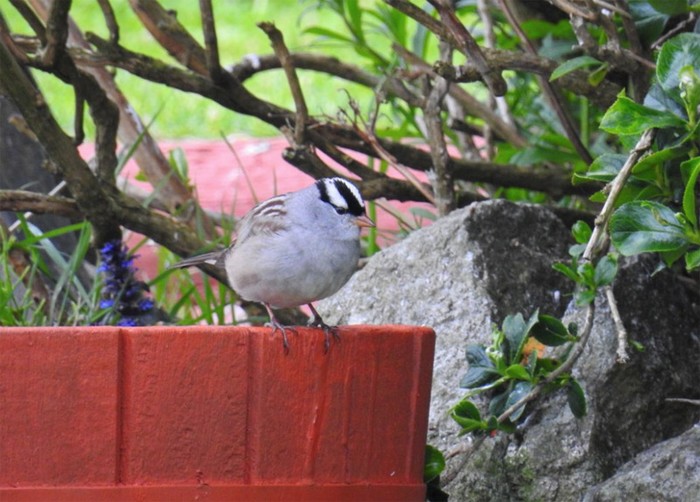
The description of the head pattern was particularly accurate and when Tony popped a copy of the Collins Guide in front of her - bingo! An instant thrust of the finger at White-crowned Sparrow - “that’s it!” - and, that was that.
Tony recounted in his notes on his neighbourly encounter the vague possibility as to whether it may even have been the Woolston bird heading north (a similar thought was mentioned with the Cley and Leuchars bird/s) - but with no images from Tony’s neighbour, all that there was to play with was a good description from a bird-lover (and, of course, the dates of the Lewis mystery beastie coincided to the exact dates of the Shetland Rose-breasted Grosbeak).
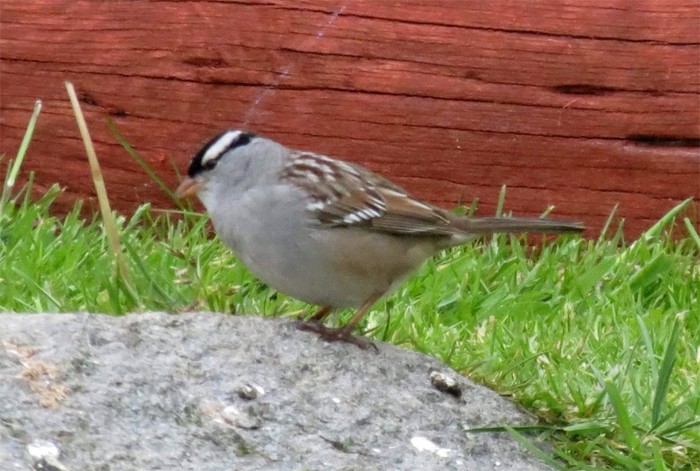
Now, four weeks later, in what could be the most astonishing coincidence, there on the Outer Hebrides, on Lewis, at Port Nis is a White-crowned Sparrow. One in the same seems the favoured option, though maybe a bird like this would draw the attention in a garden somewhere, but with the recent-ish arrival the B.B.C on North Uist, well, maybe this is “just” an astonishing coincidence.
As was mentioned a month ago, there have been two years prior to 2016 which have yielded two records a piece - May 1977 produced the 1st and 2nd records for Britain (on Fair Isle and Hornsea Mere) with 2008 offering up a belated New Year’s gift with the show-stopper at Cley and, as touched on above, what may (and it’s a leap of faith I know) have been the same bird a whole two months later in Fife, in gardens at Leuchars, in Fife.
It certainly isn’t the Woolston bird, so we have at least one more year with a twosome on board. We’ll never know the precise arrival date for this badger-headed gem (spadger-headed even?) but in a strange, strange month, nothing could beat this one for wackiness.
Oh, hold on….
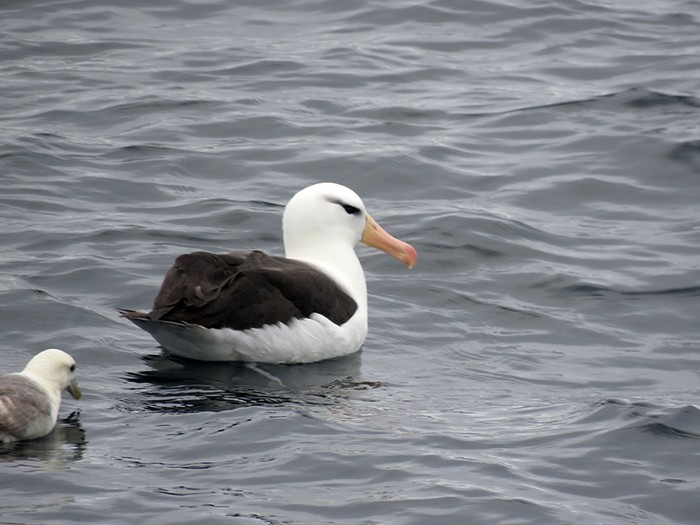
…yes, it was proper “toss of the coin” territory for what came first here (I actually worry about these things…) and just pipped at the post by the North American spuggie was the first of the outstanding birds around our most northern islands of the remarkable Shetland archipelago - the weather suggested that it was only ever going to be a really rare passerine but, as has so often been the case in the last few weeks, all logic has been thrown out the window like baby with the bath water.
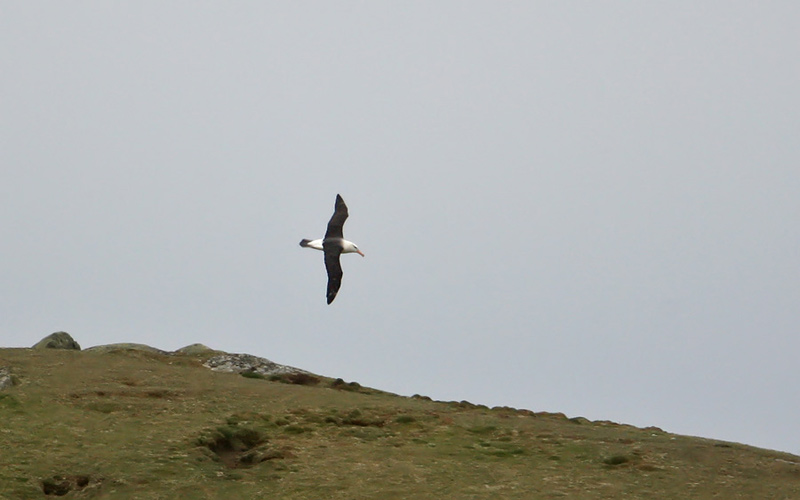
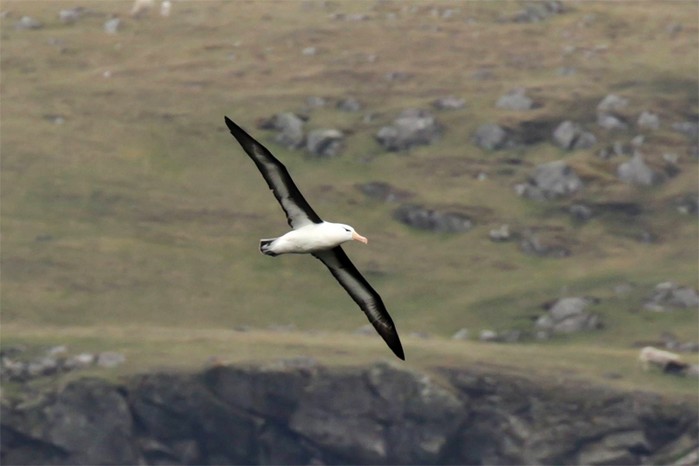
So, yes, Shetland did pull in an absolute cracker this week but it came in the guise of the awesome and somewhat wayward adult Black-browed Albatross that more often than not frequents the German (and sometimes Danish) coastline - and the bird’s chosen destination around the vast archipelago was…where else…Fair Isle.
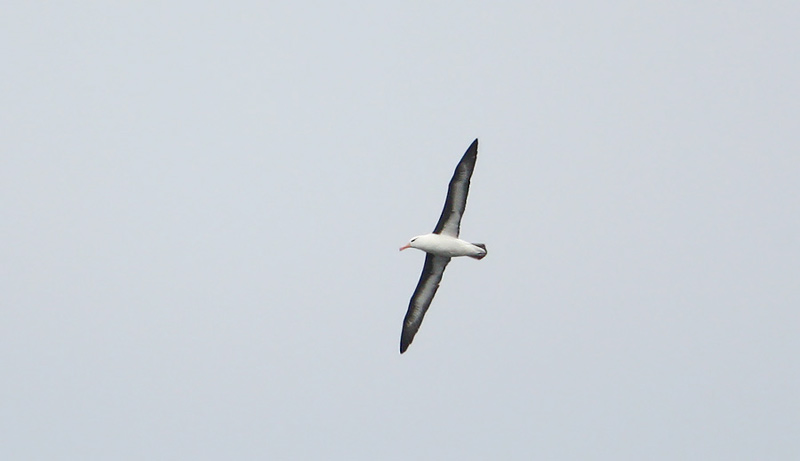
First noted close inshore, near Furse, in the island’s northeastern corner by Cornishman Keith Pellow (as he left the island on the diminutive Good Shepherd IV) around breakfast time on 28th; it wasn’t long before the mighty beast was circling close to the Bird Observatory, passing over Buness and then Sheep Rock, a few 100 yards to the south.
The Black-browed Albatross was seen for less than an hour in all (last noted at around 8.30 over Sheep Rock) before making a mid-morning re-appearance, over the same vast rocky outcrop, at just after 10.30am and further sightings followed until lunchtime. That was that though - there was no further sign through until mid-afternoon at least.
This remarkable misfit has already paid one visit to British waters, that stunning midsummer teatime dream performance at Minsmere on July 12th last year, and that it is back in our waters is really no surprise whatsoever - each and every coastal county, each and every seawatcher dotted down the North Sea should be on high alert for years to come as this bird could turn up anywhere, anytime - as it has proved this week - the most recent sighting in Germany was on Helgoland on May 20th (it has been far more sporadic in appearances this spring).
Eyes need to be peeled in any seawatch weather ahead…
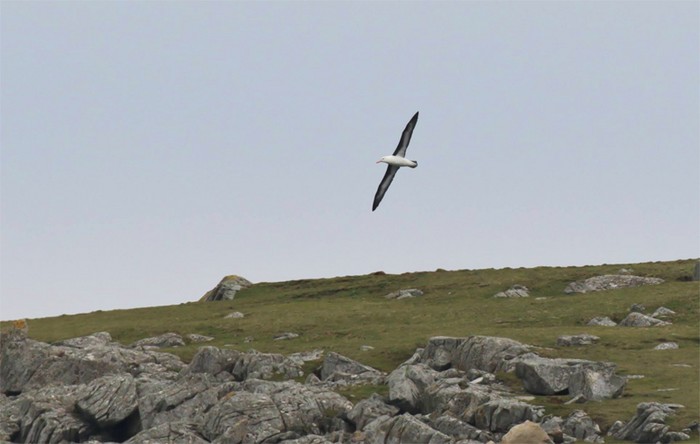
Many 40-something birders will already have a Black-browed Albatross on their Shetland lists, courtesy of the Grand Old Man of Hermaness, Albert. T. Ross, who made his debut along the astonishing cliffs of Unst in July 1972 and, after missing out ’73, was seen each year (over a period of months each time) until 1987. An absence followed through 1988 and 1989 but normal service was resumed in 1990 with July 7th 1995 being Albert’s last day on site.
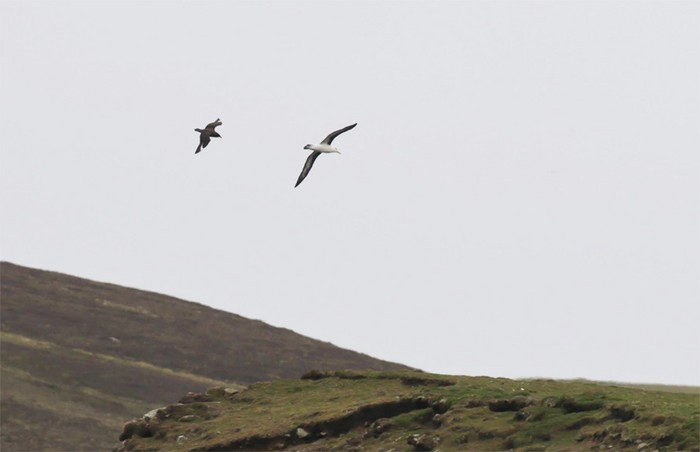
A quick scan of the decades suggests that Albert never did appear anywhere else around Shetland, so this is yet another 1st for Fair Isle (after an albatoss sp., was seen around the island in May 1949) and it comes hot on the heels of last week’s Little Egret…
OK - so now we can talk about the sort of thing that was, given the weather, just the sort of bird you could imagine turning up on Shetland at the end of May in the weather mentioned above.
Step forward the Eastern Olivaceous Warbler found at Scatness, Mainland, during the evening of 29th - a supremely rare visitor that still has less than 25 records in the history books (22 accepted and one photographed, non-submitted bird), over a third of which have been found on Shetland.
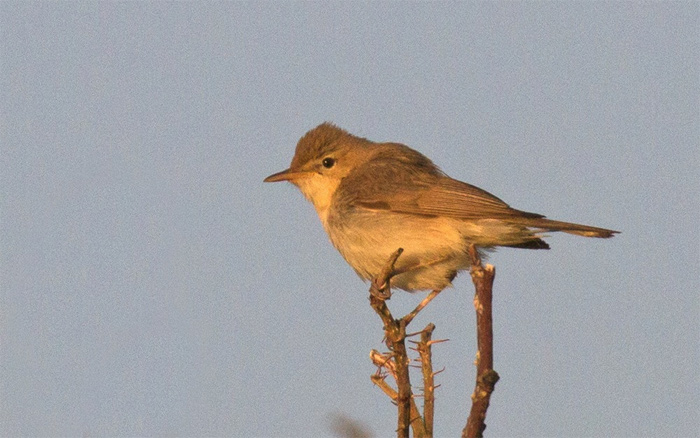
This week’s excellent find (still in place to 31st) will become the 9th record for the islands - the first for Shetland was an early June bird on Fair Isle in 1995 and six have followed in the 2000’s; a Mainland bird in August 2002, a first-winter on Foula in September 2008 with another Fair Isle bird coming the year after, also in June. The annual run continued through both 2010 and ’11; September birds on Mainland and then Fair Isle again with the most recent records until now being a week long stayer in October 2013 at Hoswick, Mainland and last year’s bird on Whalsay, also in September.
As you’d have guessed by now, September is the best month here for records of Eastern Olivaceous Warbler - we’re up to a dozen now, but spring records are extremely rare; two in June (the two Fair Isle birds mentioned above) with just one previous May bird, one which was trapped and ringed at Portland Bird Observatory on 17/05/08.
Another grand “new rare” now and we’re whizzing down from Shetland to Norfolk’s east coast where one-time Punk James Gilroy brilliantly unearthed a female (presumed) Eastern Black-eared Wheatear along the sea wall at Cart Gap, not far from Happisburgh on the morning of 28th (at around the same time as the Albatross was doing his thang on Shetland (whilst allowing me to bathe in the glow of another successful prediction).
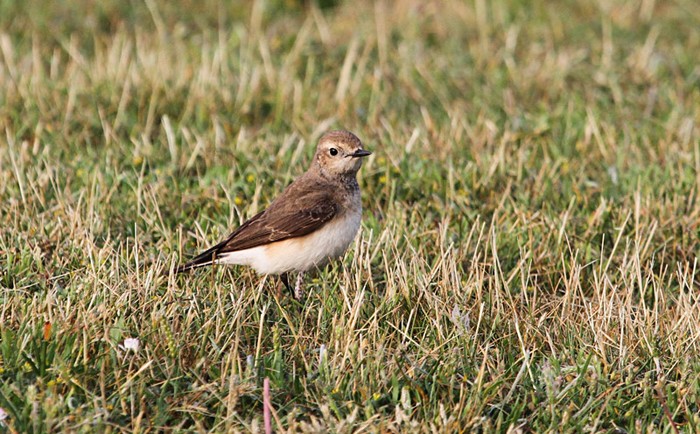
Neat and tidy photos were swiftly obtained but the bird departed swiftly from beachside and ventured off in to the cliff-top gardens and that was that…almost as swiftly as it been located, then it was lost.
Aside from a few buildings and earthen fields close by, there was no suitable habitat within range, so it is anyone’s guess as to where the bird ventured off to - inland or back to the coast?
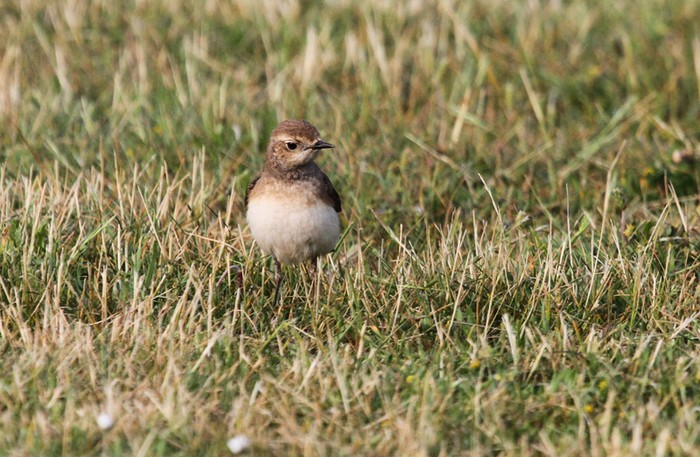
Either way, it was another grand find for the now BOURC-establishment man (all punks become establishment figures…) and James’ discovery becomes the first Norfolk Black-eared Wheatear since the superb autumn first-winter male (a Western hispanica) at Stiffkey for nine October days in 1993.
They make up two of the county’s five in all - two of the others were seen in 1975, a male at Holme in June followed a one-day May bird at Cley, with the county’s first arriving at Salthouse in the late summer of 1965.
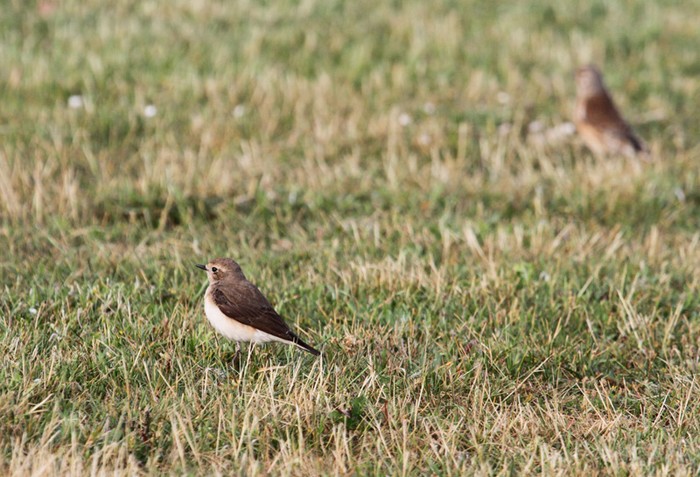
Not unlike the previously mentioned Albatross there’s a chance that the Wheatear also found a way to our shores from Helgoland - a very similar looking individual was seen on the island just three days before the Cart Gap bird was found.
…and so it continues…
…while a Lammergeier has wingspan that can approach upwards of, and just a little bit beyond nine feet (hold out your arms, and add three feet…big huh?) the favoured environs of the beautiful Dartmoor National Park cover an area pretty adjacent to 370 square miles - which is an awful lot of arms outstretched - so despite eager eyes scanning the moorland the needle:haystack vibe (no matter how big the bird) was well and truly to the fore again this week as the saga of the juvenile Lammergeier continued.
After the one and only multi-observer performance near Princetown on 23rd the searching (from a small band of dedicated retirees and rampant listers) became harder and harder and harder.
Just as with last week, no sooner had the trail seemed to warm then it cooled right back down again, almost in an instant. Despite the proven tendency to roam away from the middle of Dartmoor, those who set out their stalls did so right back around the area between Postbridge and Princetown, twigging that perhaps no matter how far this lost waif wandered it seemed drawn to the crags of Devon.
The first day of the new review period passed by with only negative news from north Cornwall (where the last sighting/report came from - around Winnard’s Perch on 24th). The second day too passed by with not a peep but as bleary eyes gazed at pagers early on Friday (27th) there (for the umpteenth time) was a belated report (more second hand news than a Fleetwood Mac song pop-kids) of the young Lammergeier - this time it was apparently seen not far from Princetown, at Merrivale, on some carrion before departing off towards Roos and Great Mis Tors, all of which happened on 26th.
Before midday on 27th, up popped another Mega Alert, this time it was (again) on the west side of Princetown, over Cox Tor - subsequent searches by around 20 bodies failed to find the boy - and then came a second sighting, close by, back again near Merrivale but (again) bodies on the ground could find nothing (which, as it turned out, was because the report was erroneous - with a capital E…).
As the head scratching continued, further news dawned 28th - a busy hour at the RBA helm for the Saturday morning bod - as (in shock news) more belatedness came forth from Somerset where the Lammergeier was seen near Wellington the previous afternoon, heading off in a northeasterly direction. Before you knew it, Dartmoor became the focus once again as a couple of reports came after-the-event at South Hessary Tor and then Warren House Inn (neither were mentioned immediately, though the latter wasn’t too far off; either way it was all very messy indeed).
It seems to be getting to a point now that, unless there’s firm evidence, a reliable observer of fine repute or (as with the Cornish sighting last week) an array of rather gripping images, then this is going to flounder fast - second- and third-hand reports, often from non-birders will queer the pitch and no one will actually know WTF is actually going on with this anymore.
Which is sort of where we’re at as of close of play on 28th (I await the next Mega Alert from today tomorrow with interest…).
…well, there wasn’t one of those, but there was another report, close to the Bronze Age settlement at Grimspound - but only seen from a moving car. Yet another ultra brief sighting of a huge bird with a vast wingspan that seems to perhaps have subterranean tendencies - how else does it disappear so swiftly?
At this point, it feels as though the moment where it “gives itself up” is has all but slipped away…so many near-misses on so many reports…but there always remains the outside chance that some time soon it will play ball.
Won’t it?
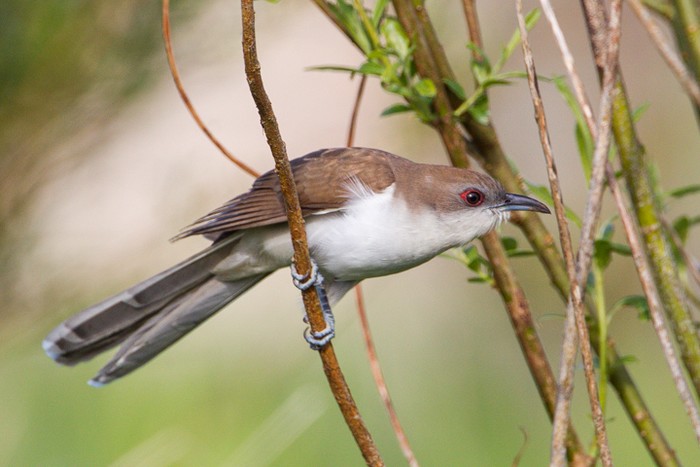
Playing ball is something that, up until now, no Black-billed Cuckoo has done for the best part of three decades but that’s all changed now thanks to the utterly unique spring vagrant long-stayer on the Outer Hebrides.
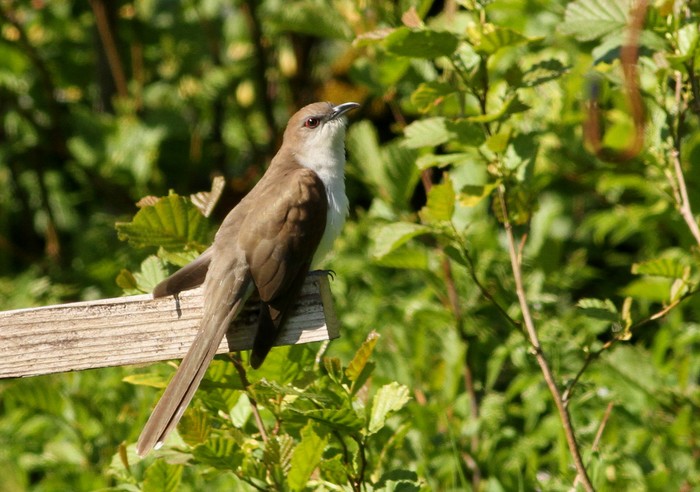
Last week’s sensational find, in and around the gardens of Bayhead, on North Uist, was initially met with a degree of panic given the species’ propensity to arrive upon our green and pleasant land and then promptly drop dead.
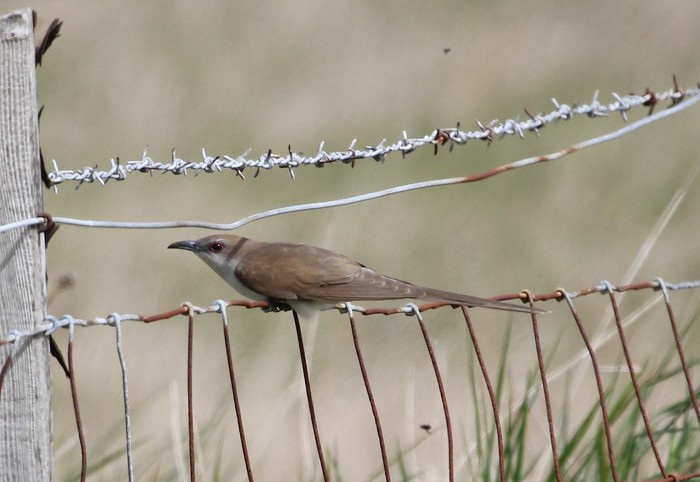
Those first photos posted online last week suggested that there was no need to panic as here was something really rather different - not only was this a staggering spring Black-billed Cuckoo but it was also a particularly healthy looking Black-billed Cuckoo too…
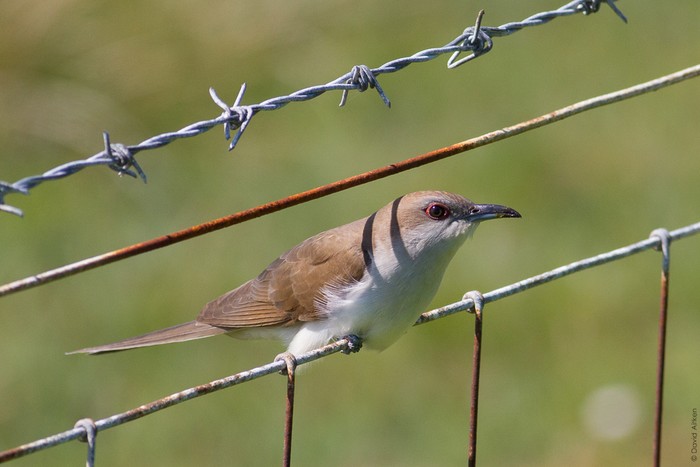
…and that was most certainly the case this week as the Bayhead Black-bill broke every record we have for the species in Britain. Not only as it that remarkable “spring 1st” but the continuing presence through until 27th broke the long-stay record too - six days and counting, doubling the previous record of the Hugh Town BBC from 1982, a total that moved along with the continuing presence to 31st - we’re in to double figures now!
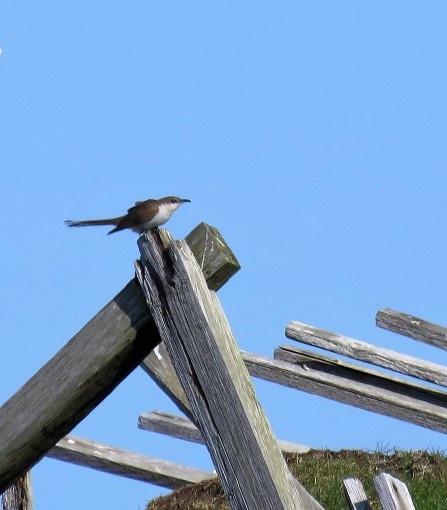
Happily, all travellers to the Hebrides have scored - the time and money invested paying off once again - and doubtless most of the birders and photographers on site have been breathing collective sighs of relief to see the bird looking so hail and hearty; truly this is one of the most exceptional vagrants of recent years…
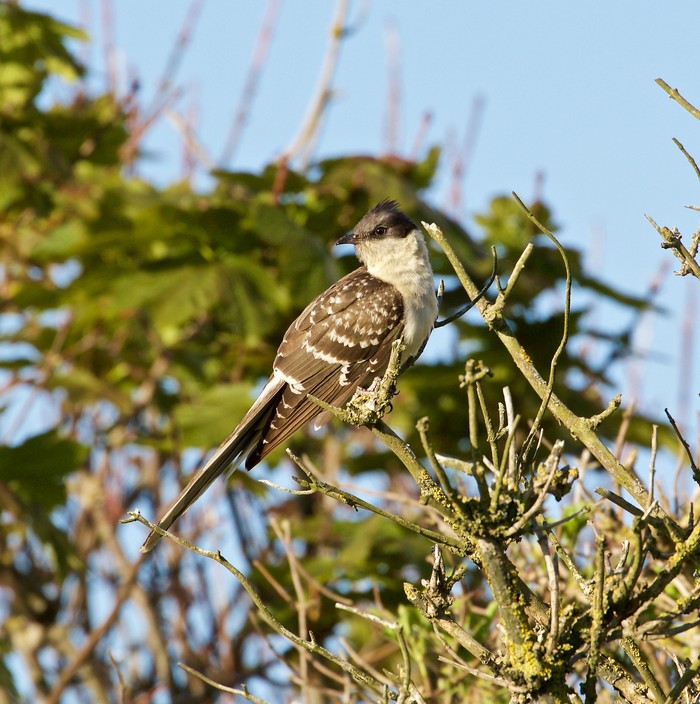
Whilst we’re in Cuckoo mode, let’s whizz down to Dorset where we can quickly mop up the activities of the first-summer Great Spotted Cuckoo - still in place around the area of Reap Lane to Culverwell (close to the Obs.,) through until 31st - taking the number of days on site tally up to 19.
There are four years through the years which have shared the occurrences of Black-billed Cuckoo and Great Spotted Cuckoo prior to 2016; most recently was 2014 and before that 1990, 1975, 1967 and, of course 1982.
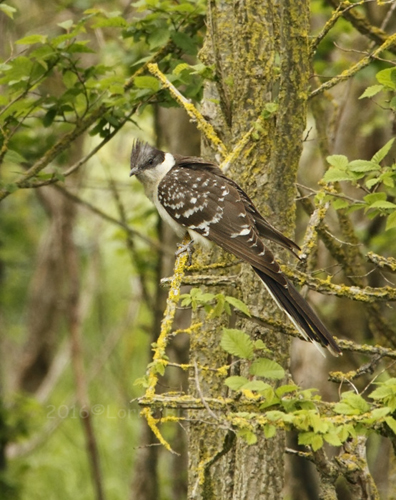
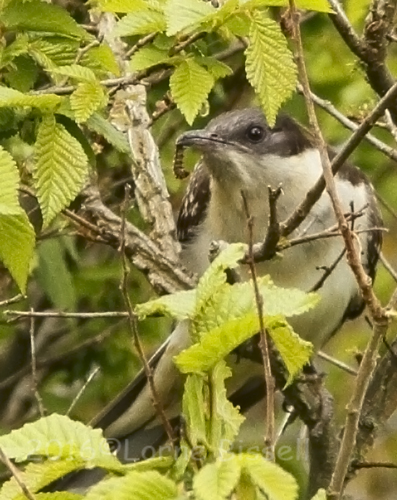
This is the year, the one and only year until now that has seen both Cuckoo species present at the same time - the well twitched Great Spot around Easington, found on October 16th ’82 and present for 22 days overlapped with no fewer than three Black-bills; the previously mentioned Hugh Town bird but also the birds found in north Devon, at Barnstaple (found on the same day as the Scilly bird, October 21st) and also the photographed bird at Hoylake, on Merseyside, on October 30th.
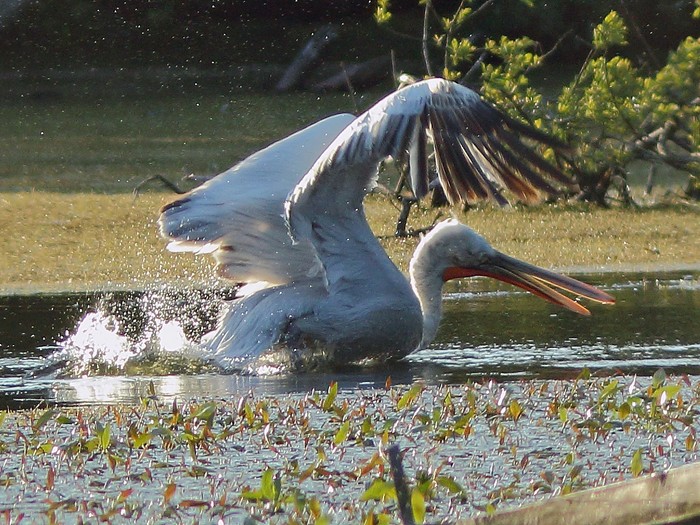
After a brief flirtation with the Helford Passage (ooo, matron), last week’s closing day saw the trusty Cornish Dalmatian Pelican amble back to where it seems to like to be the most - Drift Reservoir - and the first six days of the new review period saw no change as the bird (still the cause of no little discussion and debate) was logged at the famous site between 25th-31st with just two sightings away from the reservoir - up at Polgigga on 25th and over St. Buryan on 31st.
http://www.bobsharplesphotography.co.uk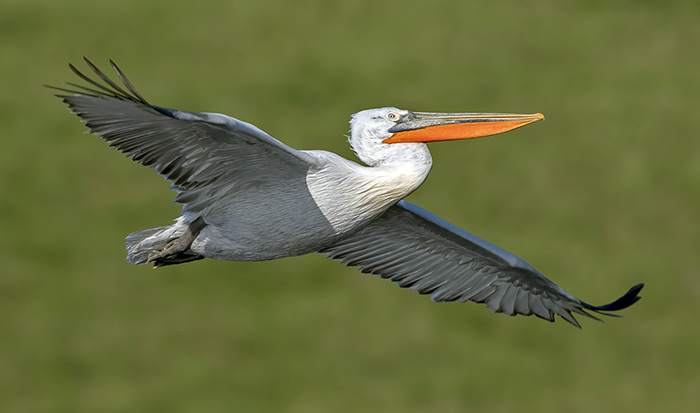
The questing around the western tip of Cornwall has been negated by the bird availing itself of the Drift environs - once it goes walkabout again, it’ll be a swine to find but chances are it will gravitate back to where it has become accustomed.
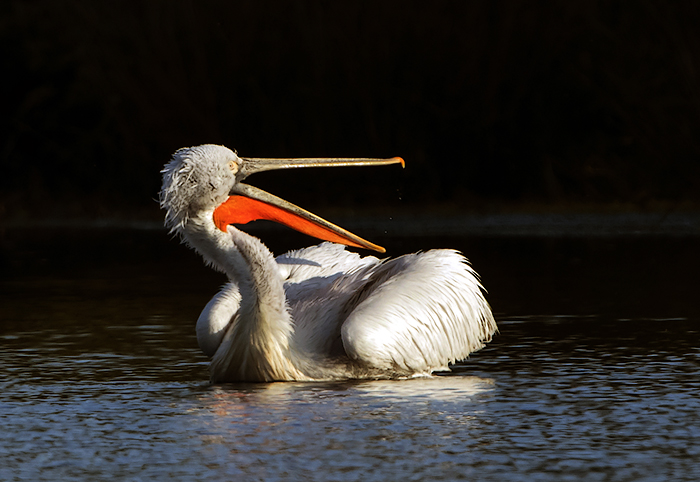
Ahead of the rather forceful North Sea gales of Bank Holiday Monday, there wasn’t much seabird action anywhere - two end-of-May White-billed Divers were noted on Scottish islands; one was seen at Basta Voe, Yell (Shetland) on 28th and another headed past North Ronaldsay the same day while the third this week was off the regular springtime haunt of Port Nis, on Lewis (Outer Hebrides) on 29th.
A lone Long-tailed Skua flew past Portland Bill (Dorset) on 25th and other singles were noted from Fishtown of Usan (Angus) on 29th and both Balranald RSPB, North Uist (Outer Hebrides) and Duncansby Head (Highland) on 31st - and that was that!
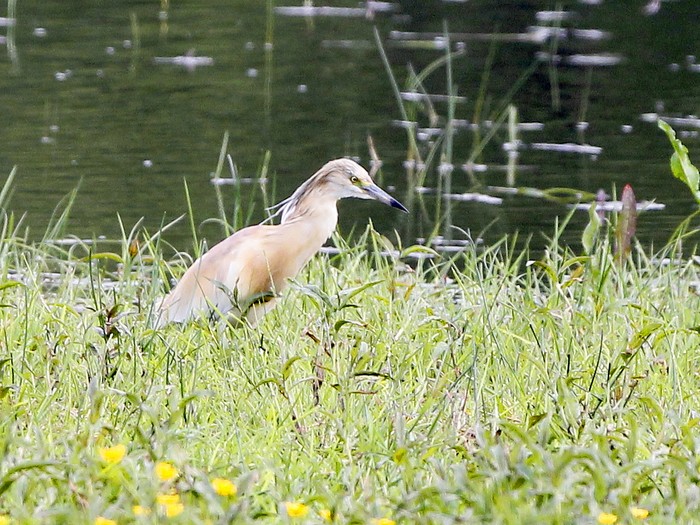
A 2016 debutant - a Squacco Heron - was a great find in south Wales on 29th, seen just east of Ogmore (Glamorgan) where it showed well for much of the day.
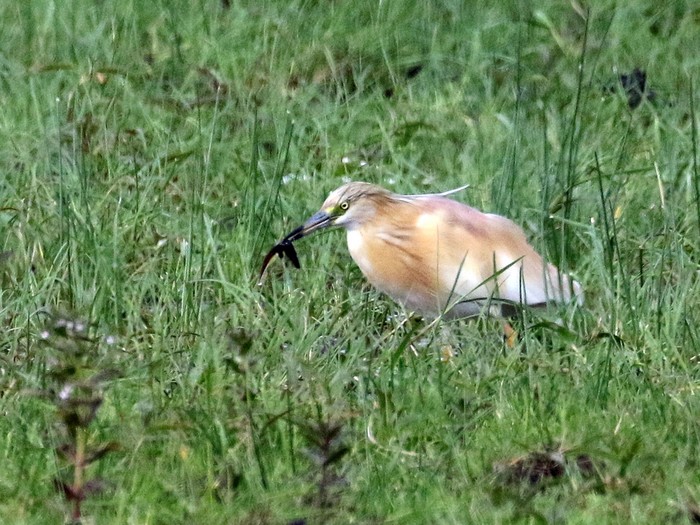
This fine specimen is the first Squacco in the Welsh county sine a two day bird at Lamby Lakes in late June 2003; prior to that there had been just two previous records, at Kenfig Pool on June 28th 1994 and near Porthcawl for a mid to late May fortnight in 1954 - and this is just the 11th Welsh record ever and the first in the Principality since the autumn of 2010 (when a juvenile was seen in Pembrokeshire).
Also new on 29th (and also another 2016 first-timer) was the adult male Little Bittern at the WWT Wetlands Centre at Barnes in west London - the first in the capital’s recording area for almost 21 years (one was seen on Hampstead Heath in June 1995) and that was the first since a pair were at Beddington in 1956 (with five records between 1875 and 1782). Good stuff…and he showed again (albeit briefly) during the following two days too.
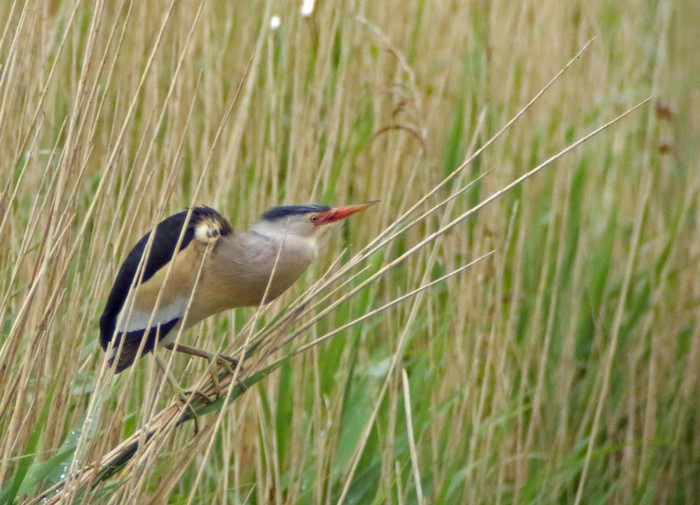
Two Purple Herons kicked off the new week, one remained at Grove Ferry NNR (Kent) and another appeared in a private area of Hanningfield Reservoir (Essex) while the third of the week was more obliging, spending the weekend in and around the Minsmere RSPB reserve, still on site on 30th when a new arrival was discovered on Bodmin Moor in Cornwall.
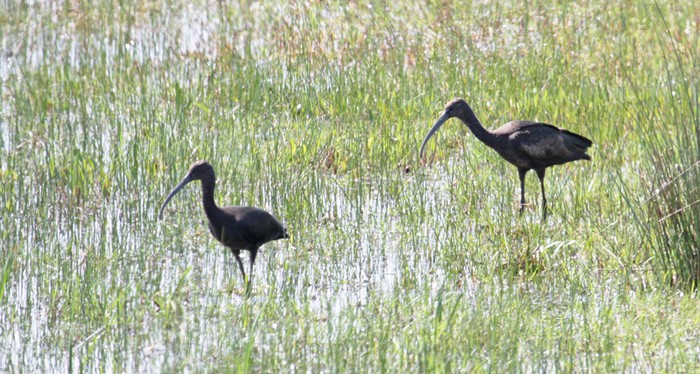
Two travelling Glossy Ibis trundled steadily down the northeast coast of England between 27th-29th - they started out at Low Newton-by-the-sea (Northumberland) on the former date moving down to Druridge Pools NR the next morning.
From there they travelled south over Whitburn (Co. Durham) and three sites in Cleveland (Hartlepool, Seaton Carew and Saltholme RSPB) before appearing on the morning of the latter date at North Cave (East Yorkshire) where they stayed to 30th, heading off high and south mid-morning. The following morning the travelling duo alighted in Suffolk, on the pools at Mickle Mere as the journey south concluded, for now at least (and it transpired 24 hours after the event that they’d snuck in to Norfolk in between; seen on the Nunnery Lakes, Thetford at some point on the Bank Holiday Monday, hot foot from Yorkshire).
Elsewhere, English singles were logged at two sites in Nottinghamshire on 26th-31st (at Lound, Mission and Newington Flash), at Arundel WWT (West Sussex) on 27th, a new bird was found at Rainham Marshes RSPB (London) on 28th and singles remained at Marshside RSPB (Lancashire) and on the Somerset Levels to May’s final day when a “new” bird headed across the Carlton Marsh (South Yorkshire).
Two Scottish Glossy Ibis were still at Loch of Strathbeg RSPB (Aberdeenshire) on 26th (one of which was at St. Combs the previous day) while five birds were seen in Ireland; a single was still around the Rogerstown Estuary (Co. Dublin) to 28th and there were twos for Cahore (Co. Wexford) to 28th with, best of all, a county first duo at Galmoy (Co. Kilkenny) on 25th (there’s a South Park gag desperate to be done here, but I’ll resist).
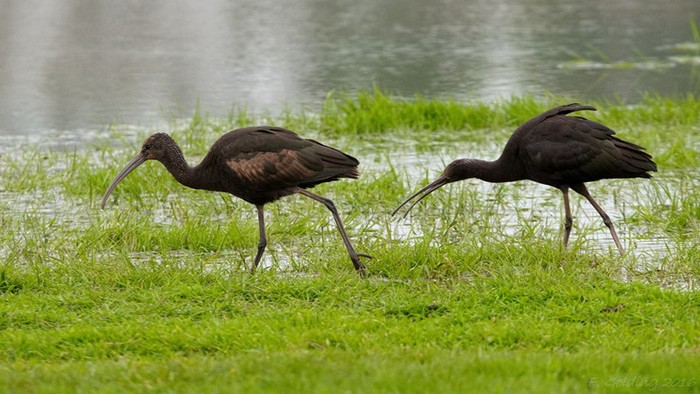
The Tacumshin Cattle Egret remained in County Wexford through until 30th at least while at least 40 Spoonbills were noted countrywide; at least a dozen were in Norfolk (four in the east and at least eight around the north coast, including three at Cley on 28th) while Suffolk managed three at Trimley Marshes SWT on 26th.
Cheshire still held on to four Spoonbills at Burton Mere Wetlands RSPB through to 29th when a fifth arrived, with a sixth on 30th, while at least with three again at Leighton Moss RSPB (Lancashire) to the same date. Four further singles were seen around England, in Cornwall, West Sussex, Kent and Cleveland, while two singles were also seen in Wales, again at Loughor (Glamorgan) on 26th and Conwy RSPB (Conwy) on 28th. Best of the bunch, the remarkable inland flock of nine at Rutland Water (Leicestershire) on 30th - how did they travel inland without getting seen?
Hermaness has already been name-checked round these parts already this week but here comes another one as a Common Crane took a flight over the top end of Unst on 26th with it or another on south Mainland, at Loch of Spiggie on 28th.
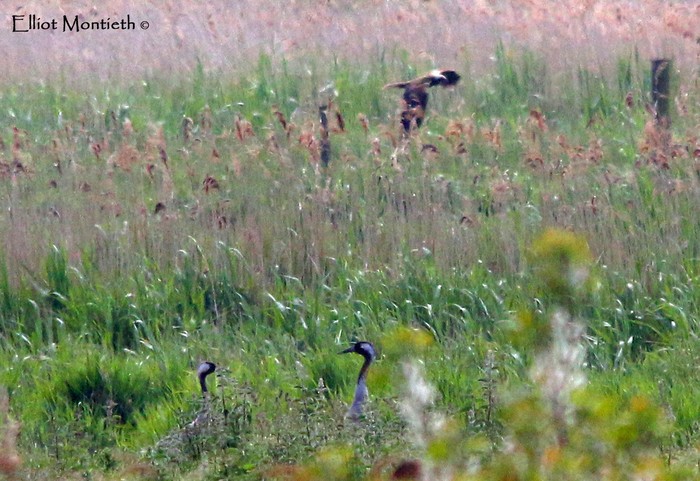
The Scottish mainland continued to hold a loner at Wigtown (Dumfries & Galloway) on 26th and two were near Wick on 31st while English Cranes included up to three in North Yorkshire - last week’s two remaining in the county, seen near Malton on 25th with one at Nether Poppleton the following day. Another Yorkshire singleton, in the South, was at Potteric Carr YWT on 24th while presumed breeders around East Anglia were at Lakenheath Fen RSPB (Suffolk) and Welney WWT (Norfolk) on 27th and in the Norfolk Broads, around Horsey and Hickling Broad NWT through until 28th.
Away from the escaped/feral/plastic White Storks of East Anglia, the week’s only potential bona fide bird was seen heading over Potteric Carr YWT on 27th before appearing over the A1, at Ranby (Nottinghamshire) the following day.
The singing male Spotted Crake remained at Leighton Moss RSPB (Lancashire) through until 30th at least while a migrant Corncrake was heard around Hartlepool Headland (Cleveland) on 27th with another reported the same day from Keyworth (Nottinghamshire).
In Scotland, the drake Ring-necked Duck was again on Loch Finlaggan, Islay (Argyll & Bute) on 29th and was the only “freshwater” duck of note.
…indeed, as of 29th, he was the only duck of note…
But that didn’t last as news of a first-summer drake Surf Scoter appeared on 30th, seen off Mussleburgh (Lothian) on 30th with the same day seeing the continuing presence of the drake at Belmont, Unst (Shetland). Down in Aberdeenshire, the drake King Eider appeared again on the Ythan Estuary on 31st.
Popping up again for the first time in almost three weeks was the Spurn Black Brant - the adult seen again along the Humber on 27th.
Coming to the proceedings on the last day of the month (and the last day of the review) was the excellent record in Northumberland of a Broad-billed Sandpiper found on the Druridge Pools NR on 31st - only the 5th for the county, following on from one on Holy Island two years and one day beforehand along with two in the spring and summer of 1999 and the county’s first, at Druridge Pools in July 1989.
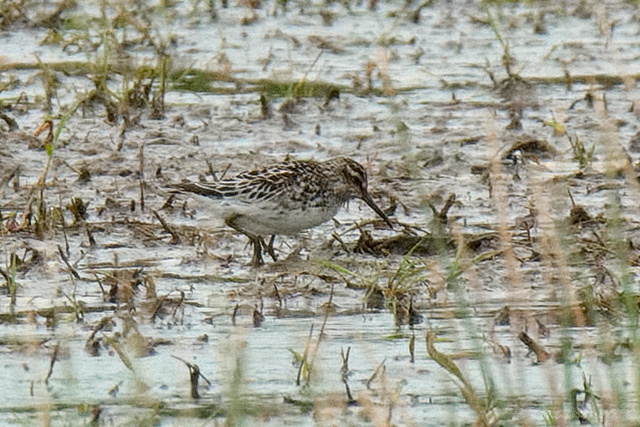
New to the year was the Buff-breasted Sandpiper found on the machair at Eoropie, on Lewis (Outer Hebrides) on 29th. Down on Tiree a new Pectoral Sandpiper was found at Sorobaidh Bay on 27th while last week’s Pec at Boldon Flats NR (Co. Durham) lingered to 26th.
In Ireland, County Wicklow scored a monster county rare in the shape of a male Kentish Plover at the East Coast NR on 25th - the first Irish spring record since a male at Tacumshin in 2011. The second record of the species this week came from West Sussex, one present at Church Norton on 30th-31st.
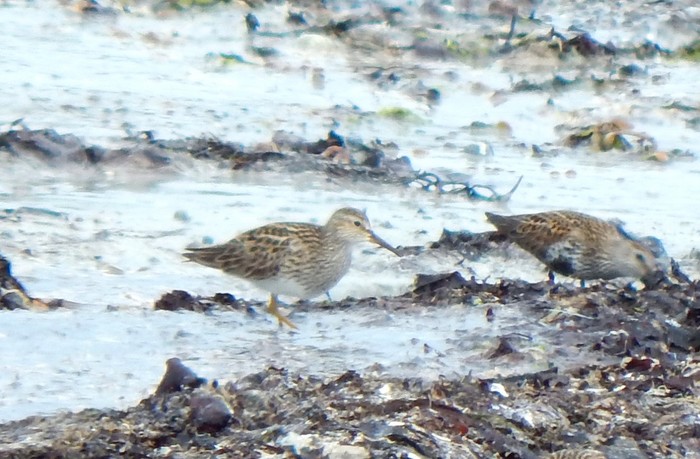
Back to Ireland for another really rather rare shorebird (in a local context), a Temminck’s Stint, was a great find on the Gearagh, Macroom (Co. Cork) on 25th - there have been only around half a dozen in the Republic in the last 15 years, the most recent of which was in Dublin in July 2014. Just two more were seen this week, both in Suffolk; at Felixstowe Ferry on 25th and on the Carlton Marshes on 29th.
The pair of Black-winged Stilts seemed happy enough (for now) at Wat Tyler CP (Essex), still on site through until 31st while one of the five Red-necked Phalaropes noted through the week was also seen in Eseex, at Old Hall Marshes RSPB on 29th.
The others in the quintet appeared at Rutland Water (Leicestershire) on 27th and on 28th, briefly at Mission (Nottinghamshire), up on Shetland, at Pool of Virkie and also at Grindon Lough (Northumberland) - the second for the site this month and (arguably) rather more interesting than the errant, duff Demoiselle Crane that was at the same site - with bird #6 seen in North Yorkshire, at Gouthwaite Reservoir, on 30th.
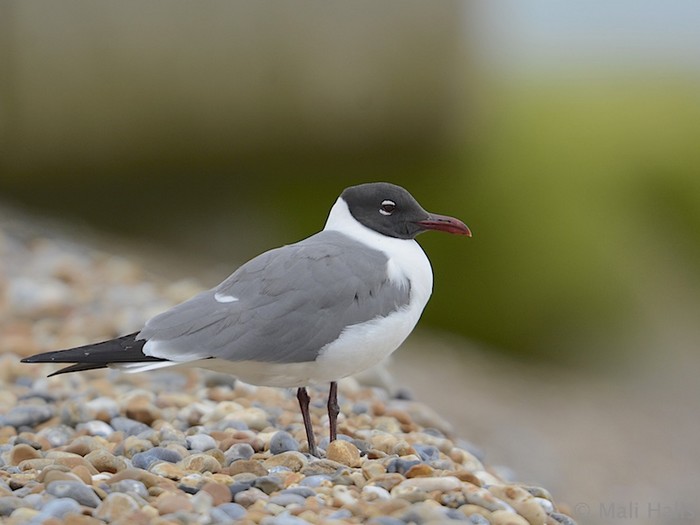
Two summer adult Laughing Gulls were a couple of the highlights on the first day of the new review period - one headed over Old Moor RSPB (South Yorkshire) - the first anywhere in Yorkshire since 2005 and a potential 1st for the county if accepted.
The second Laughing Gull of the day, and rather more obliging was the cracking bird found on the seafront at Hastings (East Sussex), that too was a very decent find in the county, the first since a first-summer at Arlington Reservoir in 2006. Life in Hastings clearly didn’t suit this particular Nearctic visitor as the next morning saw it take up station just along the coast, around The Patch, at Dungeness (Kent) where it spent the whole day - the eighth record for the site (out of nine county acceptances) and the first in Kent since a summer adult was found at Dunge., on June 6th 2007.
(The first record at Dungeness was widely held to have been the very first record of the species for Britain, seen on May 11th 1966, but it was superseded by an ancient record from Sussex in 1923).
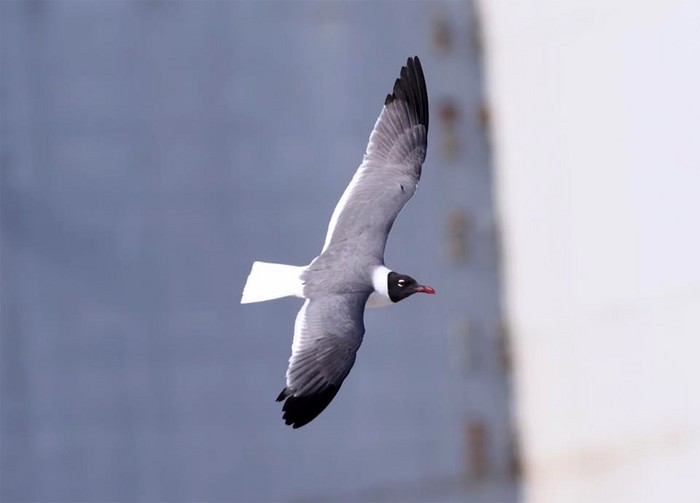
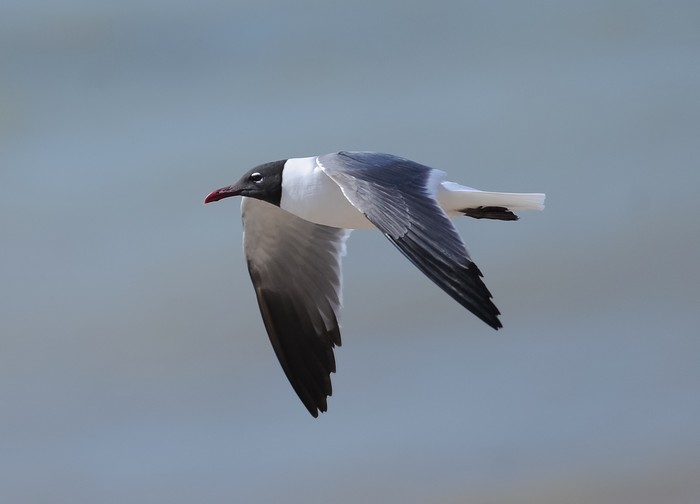
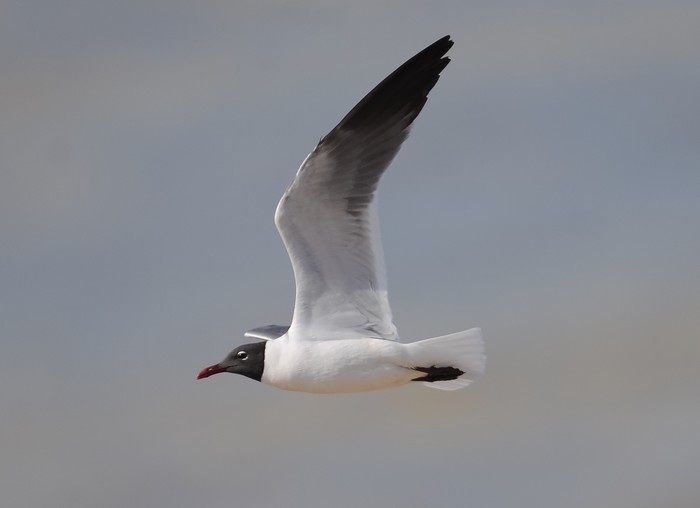
What was presumably the ex-Sussex and Kent Laughing Gull tracked north in to Suffolk on Bank Holiday Monday (unless it was the Yorkshire bird, or a third) - seen close to the River Alde, at Slaughden, for what could prove tobe only the second record-everf for the county, the 1st for Suffolk being noted a first-summer around Minsmere, Sizewell and Lowestoft in July 1995 (having initially been seen in Norfolk).
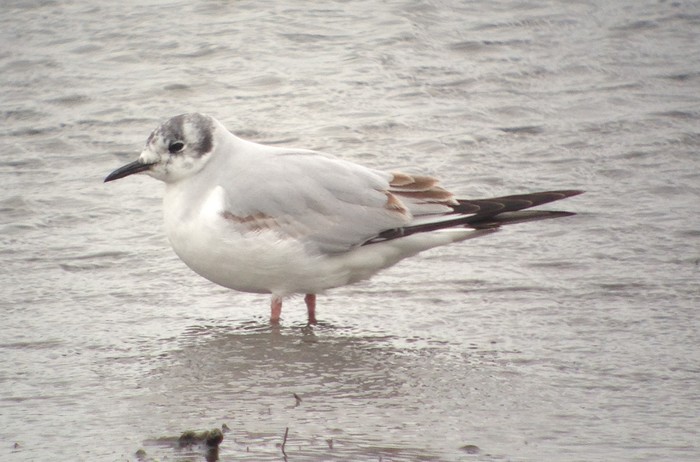
In Northumberland, the first-summer Bonaparte’s Gull found at last knockings last week at Castle Island continued to show off and on until 31st, moving half a mile to the Wansbeck Estuary on the latter date - becoming the 8th record for the county. Across the Irish Sea, on the Swords Estuary, the week’s only Ring-billed Gull, a first-summer, was noted on 31st.
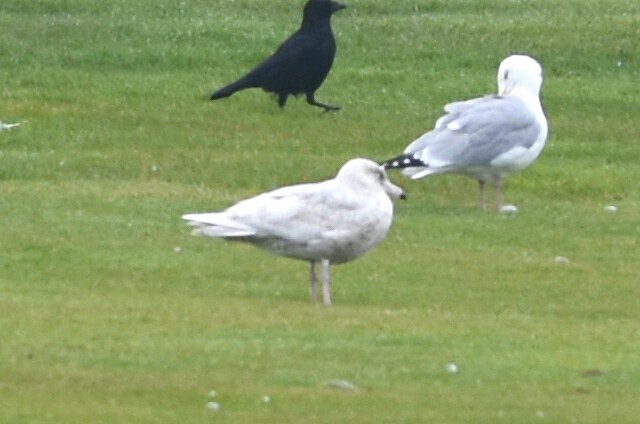
Before departing LaridLand let’s quickly mop up the lingering white-winged gulls that were on offer this week; Lucky 7’s all round for both Glaucous and Iceland Gulls - two of the former were in Highland, with unseasonal singles in Kent, Norfolk and East Yorkshire while the latter saw one still in the far southwest, in Cornwall, with one in Kerry and five for Scotland...
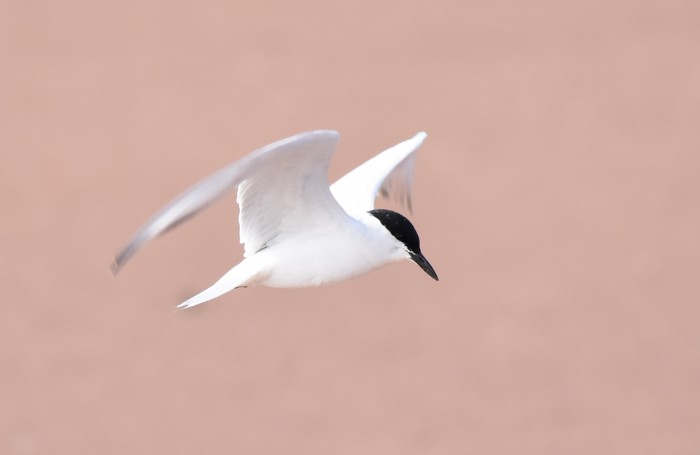
…which is where we’ll stay for the superb record of the first Gull-billed Tern for Lothian, found at Belhaven Bay, not far from Dunbar on 28th and where it remained until the following day too.
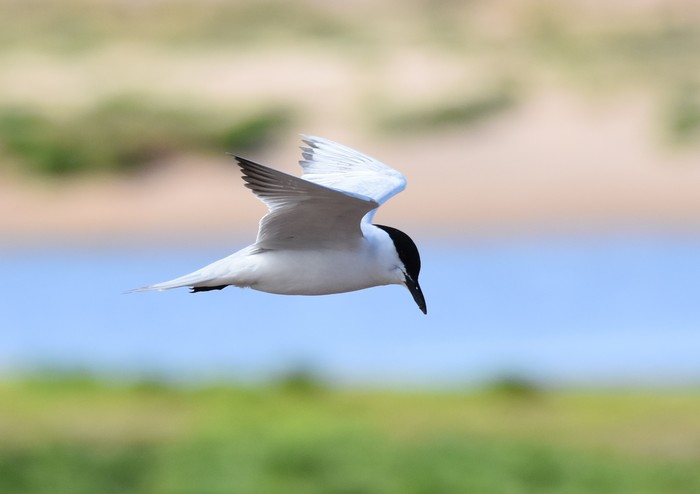
Gull-billed Tern is a desparately rare bird on the Scottish mainland, this is just the thrid-ever (following singles in Forth in May 1977 and Dumfries & Galloway in October 1990 - both of which were one day birds). Island birds number 11 in all, two for Tiree and Orkney, three for Shetland and four for the Outer Hebrides.
West Wales scored with a lovely White-winged Black Tern at Penberi Reservoir (Pembrokeshire) on 26th - another big county rarity, this being the first since a juvenile was off Strumble Head in August 1999 and only sixth ever noted (and is the first spring record of the lot).
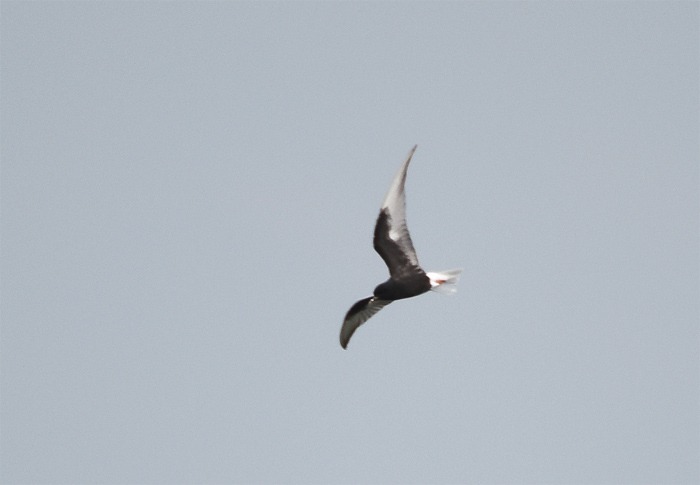
Back lurking in Galway (did it go too far at all in the first place) was the adult Forster’s Tern seen at Doorus on 28th - the first sighting since March.
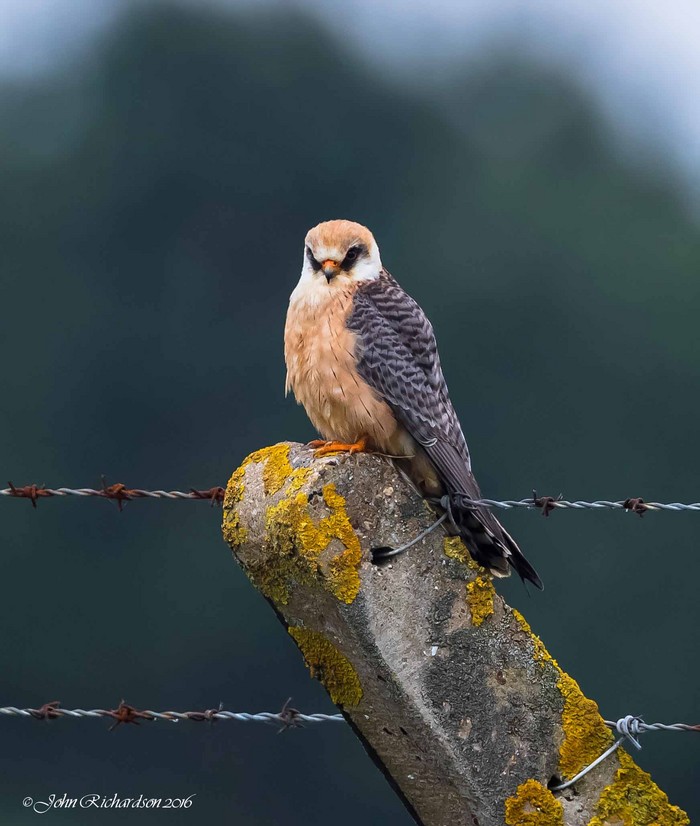
All three of last week’s female Red-footed Falcons remained to various points of the last seven days - first to depart was the bird in Suffolk, still at Sutton Common until 26th and she was followed by the Cotswold Water Park female who left Wiltshire on 28th only to return on 30th. Lingering longest was the bird in Essex, seen at Bowers Gifford on 25th-26th and 28th-29th, taking a trip to nearby Wat Tyler CP on 27th.
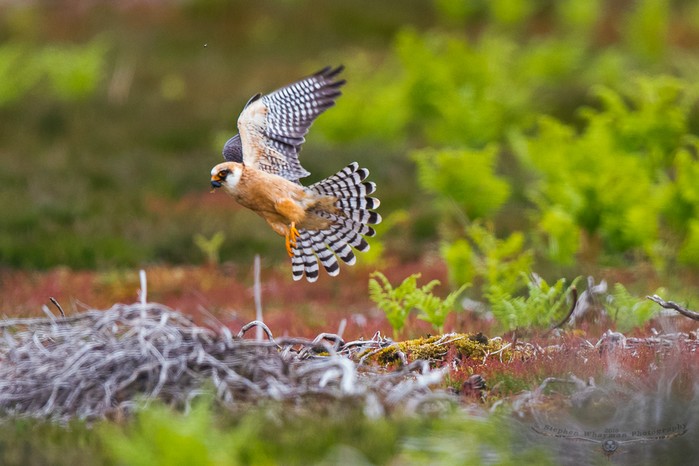
New though was the female Red-foot at Paxton Pits NR (Cambridgeshire) on 30th - wonder if it was one of the above?
In amongst the now annual heavy late spring Red Kite passage in Cornwall this week (120 were counted over both Sennen and the Lizard on 25th) was a few Black Kites - exactly how many is tricky to gauge but at least two, maybe three (or even four) involved.
Two singles were seen at around 9am on 25th - over Nanjizal and Falmouth with the former presumably accounting for the bird seen at St. Just a couple of hours later, while the bird seen at Penryn and then Truro between 1pm-2pm may well have been that original Falmouth bird.
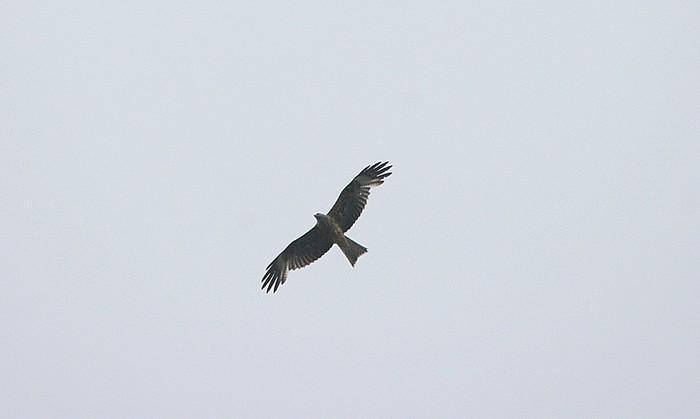
The Nanjizal/St. Just bird was perhaps the most likely candidate to be the bird that roosted at Drift Reservoir on the evening of 25th - and it stayed in the area until 27th - with a visit to Land’s End and St. Just on 26th (and again on 31st) presumably coming from this bird.
Not too many Montagu’s Harrier to mention this week - late migrant females were seen in East Sussex, at Hastings on 26th and over the moors near Fernworthy Reservoir (Devon) on 27th while another bird was at Ventnor (Isle of Wight) on 29th. A young male was at Sandwich Bay (Kent) on 28th-29th and in East Yorkshire, the (lone?) female remained at Blacktoft Sands RSPB throughout the week and a first-summer was hunting the fields at Spurn on 31st.
Dorset provided two of the week’s six Honey Buzzard sightings; on-off at Portland on 27th and over the airport at Hurn on 29th. Further singles were seen at Marshside RSPB (Lancashire) on 26th, northbound near Abingdon (Oxfordshire) on 28th with another the same day over Exmouth (Devon). The final arrival this week was the bird that headed over Strumble Head (Pembrokeshire) on 30th.
Making their debut appearance for the year this week were the two Greenish Warblers that arrived on Bardsey Island (Gwynedd) on 28th - a singing male was found first at Nant and was duly processed by the Observatory staff. Then, during the afternoon came an unringed bird in the Obs., garden, the latter of which lingered in to the following day - these two are the first spring birds on the island since 2012 and they remained until 29th. The third of the week surfaced late in the day at the rather apt Dip Farm, in Gunton (Suffolk), seen there on a bleak East Anglian 31st.
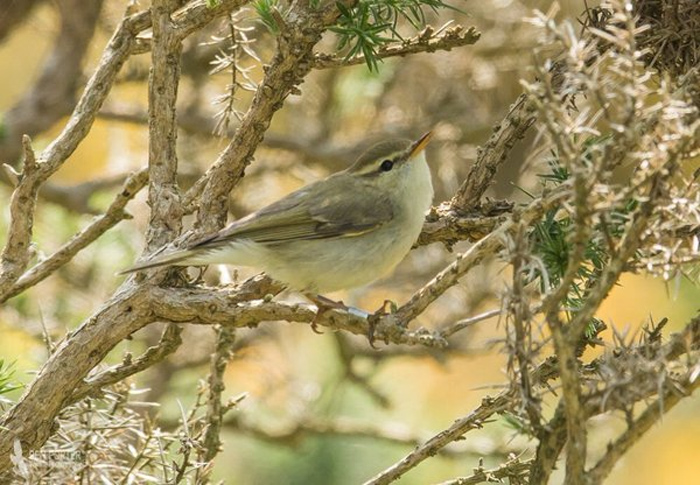
Ahead of the amazing flypasts from the Albatross, birders on Fair Isle had enjoyed the late evening appearance of the second Rustic Bunting of the month on the island - this time it was a female down at Utra on 27th (with added value coming in the shape of a Hoopoe flopping down along the roadside post RB-twitch.
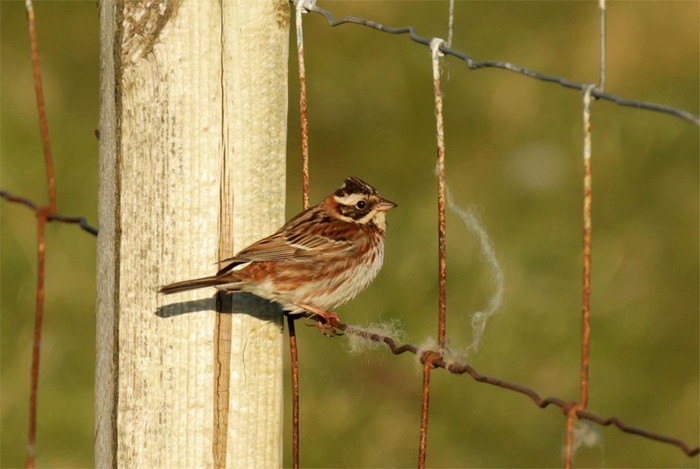
Three more Subalpine Warblers were added to the impressive tally for the spring this week though none were specifically identified to form/species. Two of them sound as though there were pretty brief too, one was on Holy Island (Northumberland) on 25th and another was reported from the gardens in Cuckoo Land, at Bayhead, North Uist on 27th. The only one to linger was the female on the Isle of May; trapped on 27th, it remained to 31st (hopefully there’s some DNA analysis in the offing).
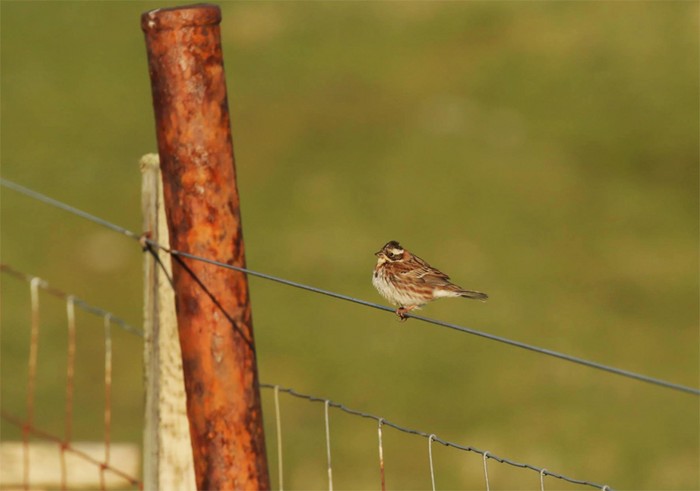
Those searching Skomer for the departed male Black-headed Bunting on 25th managed some compensation in the form of a Woodchat Shrike and it was one of two noted that day, the other (a male) was found in County Cork, at Toormore.
The tidy Savi’s Warbler spring was mentioned last week and another new bird was added to the 2016 tally on 29th - a singing male found at the Newport Wetlands NNR (Gwent), the second in the county in the past couple of years (a singing male arrived in May 2014), and he was still there on 30th-31st too.
Three birds remained from seven days ago, still at East Coast NR, near Newcastle (Co. Wicklow) and Minsmere RSPB (Suffolk) through to 27th with the elusive bird at Blacktoft Sands RSPB (East Yorkshire) until 28th.
In East Yorkshire, the second new (and singing) Melodious Warbler for the county this month was found at Spurn on 30th.
Down in Cambridgeshire there was no doubting the continuing presence of the singing male Great Reed Warbler at Paxton Pits through until 31st while the demoted singing male Iberian Chiffchaff on Tresco (Scilly) was present to at least 30th.
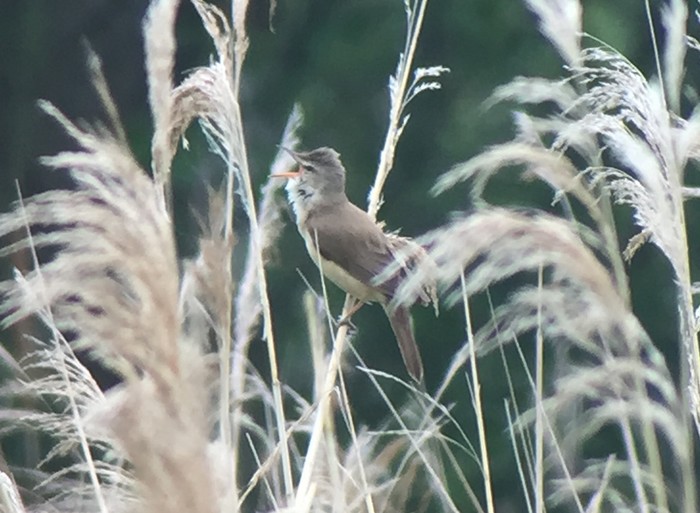
The north of Ireland was the only place to log a Red-rumped Swallow this week - one seen in County Down, heading along the beach at Murlough towards Dundrum on 31st; this could be the third in successive years, singles were reported in May 2014 and 2015 before that, there was just one accepted record for the county, two November juveniles seen at Newcastle in 1990.
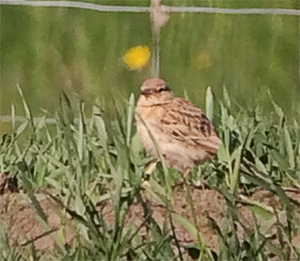
(© Marc Hughes - webirdnorthwales.blogspot.co.uk)
The weather clearly wasn’t suiting the more colourful members of the spring passage brigade - two Bee-eaters were seen at Worth Marshes, Sandwich (Kent) on 28th with at least two more heard the same day over Polgigga (Cornwall). The third heard only Merops of the week went over Otterhampton (Somerset) on 29th and at least one more followed over Clennon Valley Lakes (Devon) on 31st.
Two Hoopoes made a way to Highland at the start of the week, noted at Loch Duntelchaig on 25th and then Culloden on 26th and another Scottish mainland bird was at Westhill (Aberdeenshire) on 28th (the Fair Isle bird was covered earlier on). Aside from four northern birds, one was seen at Lodmoor RSPB (Dorset) on 27th and one or two were noted around Coverack (Cornwall) on 26th. A male Golden Oriole was a heard-only bird at Pilning (Gloucestershire) on 26th while another was reported flying over the M25 on 26th.
Wrynecks were in short supply too - one was reported from Sandy (Bedfordshire) on 26th and it was followed by singles on Holy Island (Northumberland) on 28th and at Otmoor RSPB (Oxfordshire) on 29th. New in Wales on the final day of the week was a Short-toed Lark at Ynyslas (Ceredigion) - the first in the Principality for 18 months or so.
In a near mirror-image of early May, a Serin was a brief (photographed) visitor to Weybourne Camp (Norfolk) on 27th and was followed later the same day by a brief (photographed) female in the dunes at Burnham Overy, while down in Dorset, at least one male was around the Observatory at Portland Bill on 28th.
As the Bank Holiday approached then so too did a set of weather that, on paper at least, suggested that fun times were ahead for birders based on the east coast - the lure of a wholly improbable BoP of variable generations down the line from introduced stock (I.N.T.R.O.D.U.C.E.D) easing with every report of a “reported still present” - there were “real birds” to find and those east nor’east winds were clamouring to draw in some typical, classic late, late May drifters...or so we hoped.
Ahead of the weekend, over the days of 26th-27th a dribble of hoped for visitors to our shores started to dot themselves around North Sea coastal counties,w ith a handful of extras following by the end of the Bank Holiday - leading the way was...
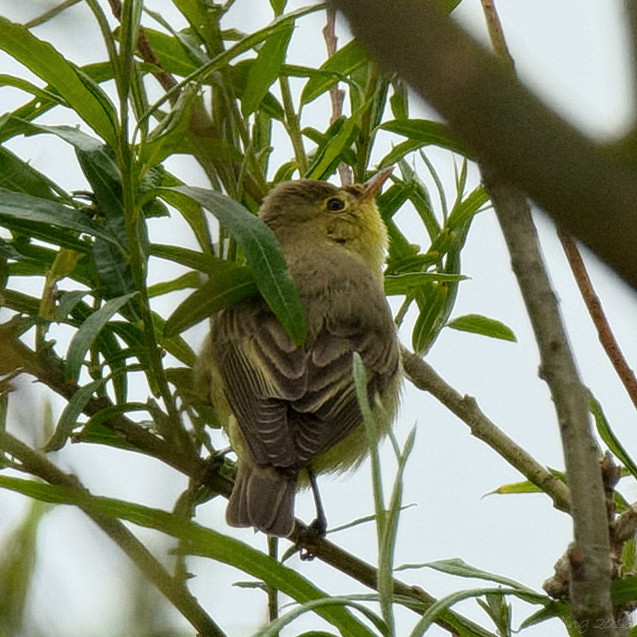
...and after one was seen on the Shetland Mainland, at Urafirth on 25th, there were ten of the these super lemon’n’lime overshoots found on 26th, spread from the northeast to East Anglia. Leading the way was East Yorkshire, where two singing males appeared near the Old Fall hedge at Flamborough Head with singles further south at Sammy’s Point, Easington and also on the Spurn Peninsula itself.
Icterine Warblers #5 and #6 were seen in Cleveland, at South Gare and also Hartlepool while Lincolnshire offered up a singing male at Wolla Bank during the afternoon. Across the Wash, Norfolk yielded a further two, at Weybourne and Gorleston-on-Sea to take the total for the day up to nine with the tenth coming to Tresta, Fetlar (Shetland).
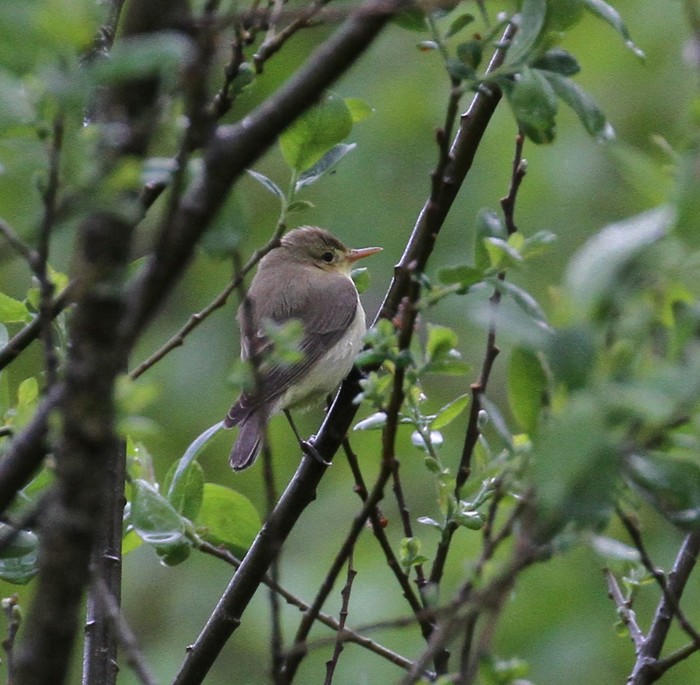
Two further newbies made themselves known on 27th - in Northumberland, at Druridge Pools and, again in East Yorkshire, at Spurn while the long weekend saw just two more noted, at Laggan, near Dalwhinnie (Highland) from 29th and on Fair Isle on 30th.
We’re heading towards what should be the peak time for this particular species and the past seven days have seen a handful of Marsh Warblers reports come forth; in Suffolk, one was mentioned for Covehithe on 27th and this was followed by one on Mainland Shetland, at Isbister, on 28th with the third of the week was on Sanday (Orkney) on 30th.
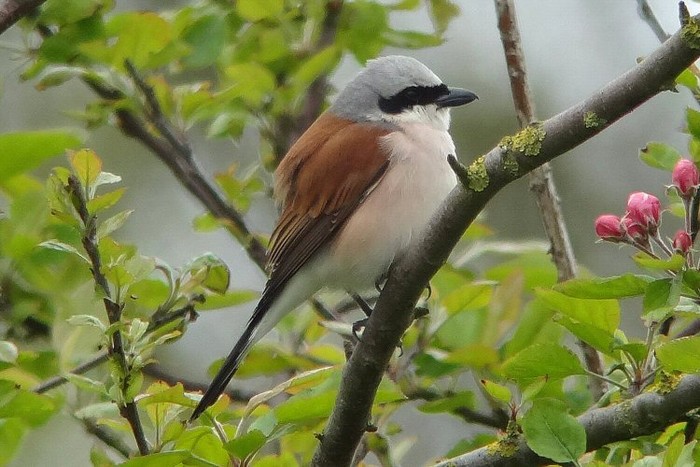
The new week began with two Red-backed Shrikes in the far north and one in the far southwest - a female was new at The Loons RSPB, Mainland (Orkney) and a male remained on Fair Isle while on Scilly, a male on Bryher was a decent spring record for the islands.
The northeast kicked in to gear on 26th-27th, anywhere between seven to nine seen over the two days within the region; the former date saw a male arrive at St. Mary’s Island (Northumberland) and two single females were in North Yorkshire, at Scarborough and also Long Nab, Burniston.
The following day the same county saw two birds, a male and female, alight at Ravenscar while down the coast, in East Yorkshire, between one and three males (the first of which was trapped and ringed) were at Spurn and another male was found at Flamborough.
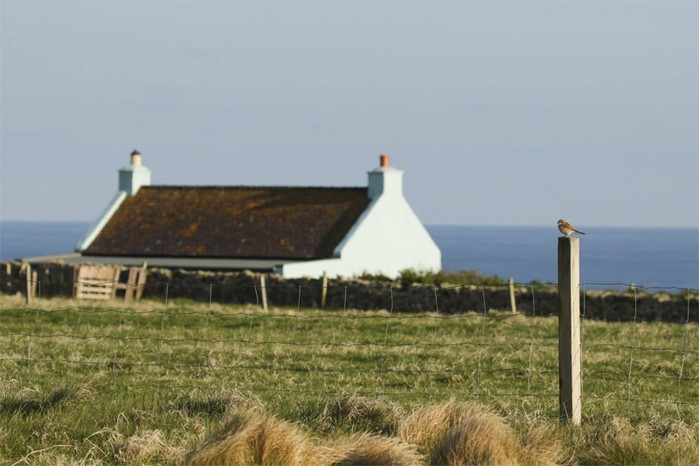
Moving the total further along (to 13-15 in all) were the two-day female on the east Norfolk coast, at Hemsby with a male finding a way to Skomer (Pembrokeshire) from 26th and a female appearing on Fair Isle (Shetland) on 27th.
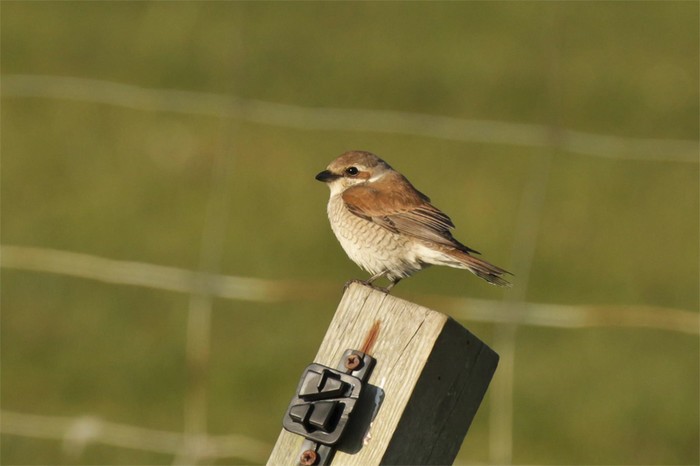
The east coast domination continued across the weekend too - seven more appeared on 28th; two were on Brownsman, Farnes and singles were also found at Scatness, Mainland (Shetland), North Ronaldsay (Orkney), the Isle of May (Fife), Filey (North Yorkshire) and Kilnsea (East Yorkshire) while 29th saw two drop on to the English east coast, males at Beacon Lane, Kilnsea and South Gare (Cleveland) with another female on Orkney, on Sanday taking the total up to between 23-25 in all.
A further two male Red-backed Shrikes were at Spurn on 30th but they could have been leftovers from previous days (or brand new of course) and fresh-in was the bird on Whalsay (Shetland) on the same date.
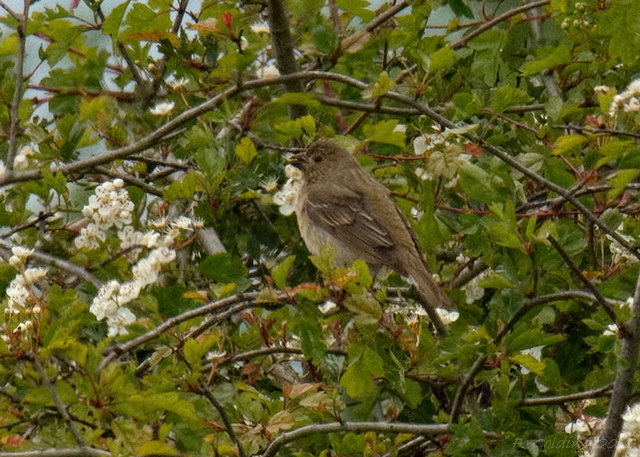
Once we depart those first two species, the days ahead of the weekend (when the weather promised much...) became a little more stingy where other drifting spring classics were concerned.
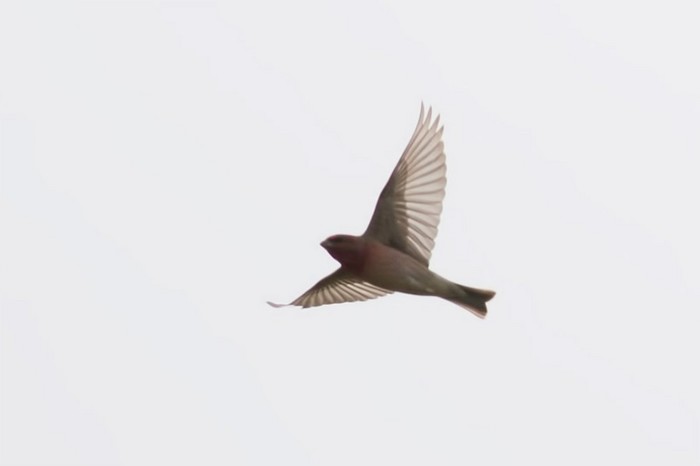
If you fancied finding or seeing a Common Rosefinch then it was off to Northumberland with you - two were found there in the first three days of the new review period - first up was one on Brownsman, Farnes on 25th and it was followed by a singing male in the bushes around Druridge Pools on 27th with another reported in County Durham, at Tunstall on the latter date.
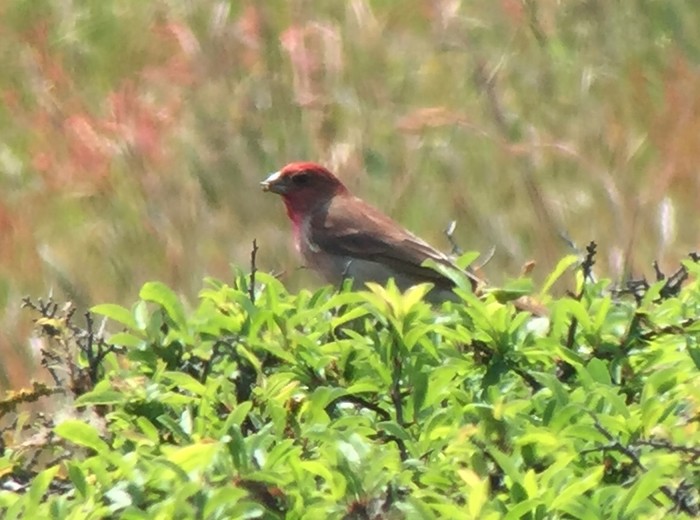
The following day saw a fine crimson-pink male Rosefinch arrive at Dungeness (and what a bobby-dazzler he seemed to be) while new on 30th was another male in song, this one on Tory Island (Co.Donegal) with another at Spurn the same day.
Given the weather, it seemed pretty weird as to why there weren’t more of the above and also why there was just the two Red-breasted Flycatcher on offer by close of play on 27th, both in East Yorkshire - a first-summer male, occasionally in song, around the Crown & Anchor, Kilnsea with another fine male in gardens at Flamborough Head.
The spring gets ever more curious…
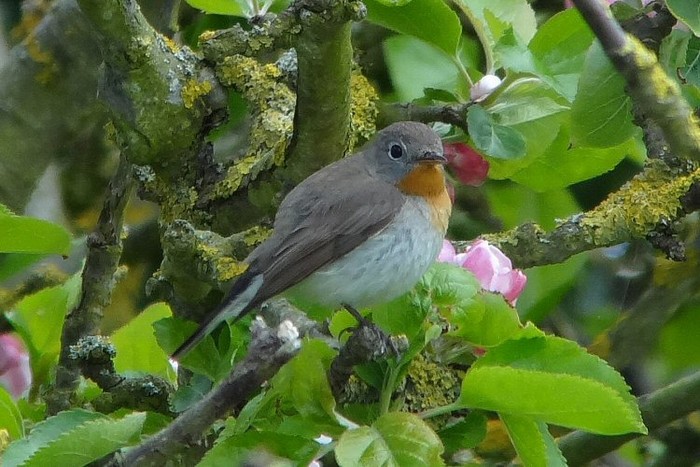
...but at least there were five more R-b F’s on offer as we progressed towards June; Bardsey landed a new arrival on a productive 28th around the beautiful island and the following day saw singles found out on Barra, at Brevig, Titchwell RSPB (Norfolk) and a singing first-summer male made for a great find in Romsey (Hampshire) - a huge county bird. The final one of the week (and the month) was on the Isle of May on 31st.
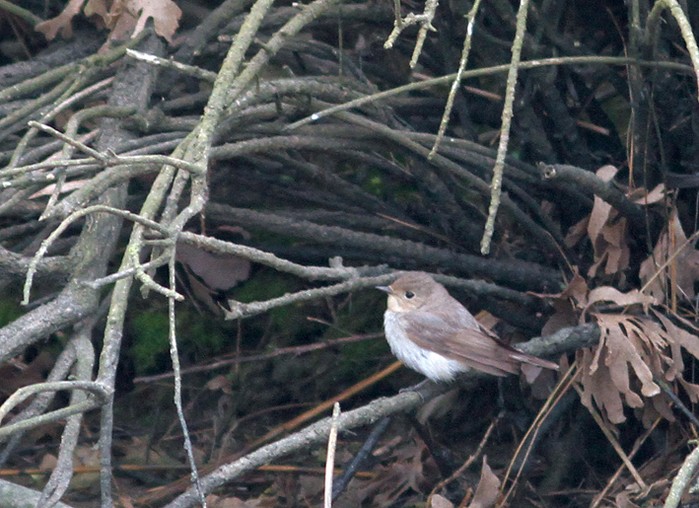
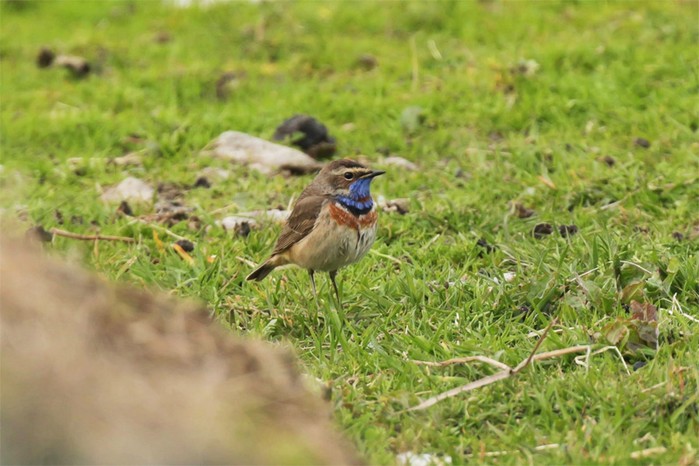
Long gone are the days of yore (the mid-80’s I guess) when a shroud of cloud and ENE’ly winds would bring carpets of Red-spotted Bluethroats across the east coast - this week was another poor showing despite what, on paper, seemed to be non-too shabby conditions.
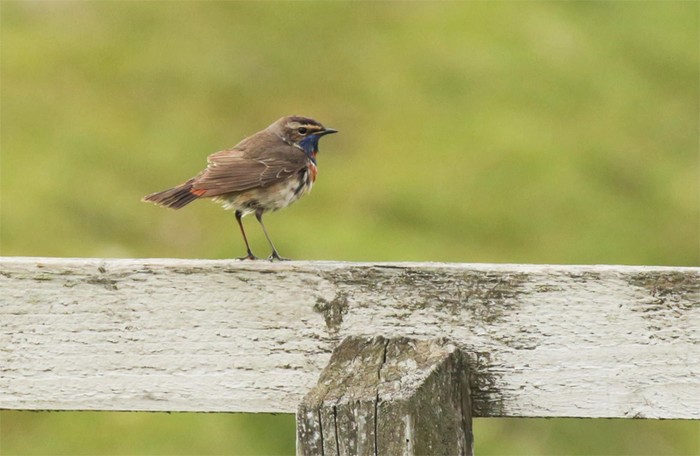
A male remained on the Isle of May (Fife) between 25th-28th and just four more were noted, three of them on 26th; one was trapped at Spurn and a female was found near Saltburn-by-the-sea (Cleveland). Fair Isle logged another too with a follow-up bird on 30th. But that was that…
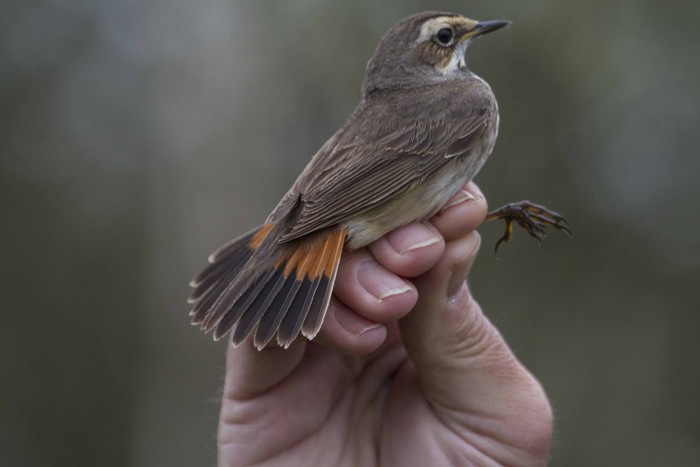
We’re most certainly heading towards the nitty-gritty end of spring as the fabled first two weeks of June approach - despite the stellar events of the past two or three weeks, this is (on paper) at least, the business end of the spring...this is really the time to expect the unexpected (tho’ learned, saged observers will argue that nothing more can top the spring already - a spring that has deposited two of the most unlikely potential additions to the British list additons in many a long year...
Anyway, all that speculation as to the why’s and wherefores on the two “you know what’s” can subside as June comes knocking on the door - and she’s brought a hefty bag of goodies in previous years to both admire and crave.
As if to get the ball rolling, the 1st of the month has a significant role call of honour where some really big rares are concerned...
Turning back the pages to June 1st 1967 and off to Bardsey where the exquiste island landed Britain’s 4th ever Rock Bunting (a one day bird only, unlike their last stunning Emberiza. Moving forward 12 years and down in to the Bristol Channel where Britain’s second Rüppell’s Warbler was found on Lundy (well twitched at the time and on site for 10 days).
A slightly more delicate Sylvia also found on June 1st was Shetland’s second-ever Moltoni’s Warbler (at Skaw on Unst) while upping the ante was that outrageous Black Lark on Anglesey on June 1st 2003.
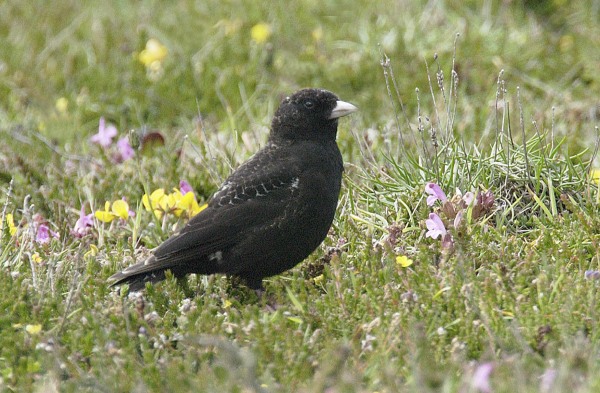
Best of the bunch? Our one and only White-crowned Black Wheatear remains a quite sensational discovery at Kessingland (Suffolk) in 1982.
...and that fabulous 1st on the 1st is one of no less than seven new national birds that have occured in the week ahead...some have “fallen” subsequently but there are some which hold their value (and kudos) to this day...
White-crowned Black Wheatear - Kessingland, Suffolk; June 1st 1982
Hermit Thrush - Fair Isle, Shetland; June 2nd 1982
Fox Sparrow - Copeland Island, County Down; June 3rd 1961
Blue Rock Thrush - Skerryvore Lighthouse, Argyll & Bute; June 4th 1985
Tree Swallow - St. Mary’s, Scilly; June 6th 1990
Citril Finch - Fair Isle, Shetland; June 6th 2008
Rufous-sided Towhee - Lundy, Devon; June 7th 1966
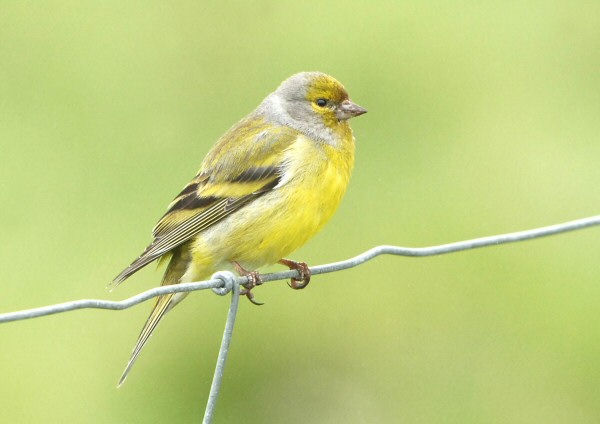
There’s been quite some supporting cast to all of the above through the ages (as expected I suppose)… Sylvia warblers have included both Spectacled Warbler (two in fact, in Norfolk from June 2nd 2014 and Devon from June 3rd 1999) and Marmora’s Warbler (in Gwent from June 3rd 2010) with “commoner” rare options from the same genus peppering the stats for the seven days ahead.
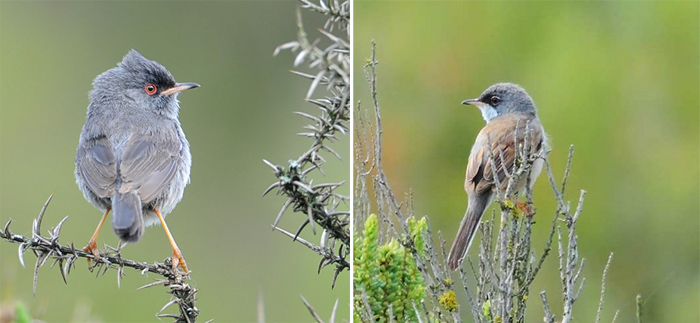
It isn’t all passerines though - Shetland played host to a female Caspian Plover on June 3rd 1996 while another excruciatingly rare shorebird that went down especially well was the ultra-popular White-tailed Plover that flopped in at Caerlaverock on June 6th 2007.
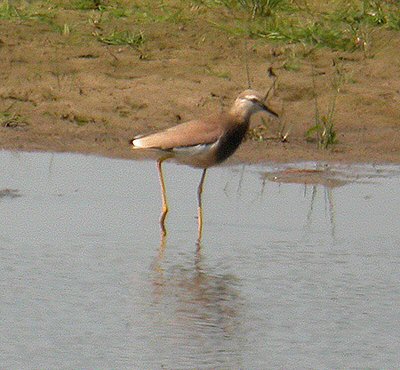
Swinging back to conclude with passerines - Bardsey has also hosted a Crested Lark (on 03/06/82) and Wales also landed a second June 4th Blue Rock Thrush (the second for Britain) arriving at Moel-y-gest in Gwynedd in 1987 and, perhaps best of all, the stunning White-throated Robin (the one and only twitchable example to date) that arrived at Hartlepool Headland on June 6th 2011.
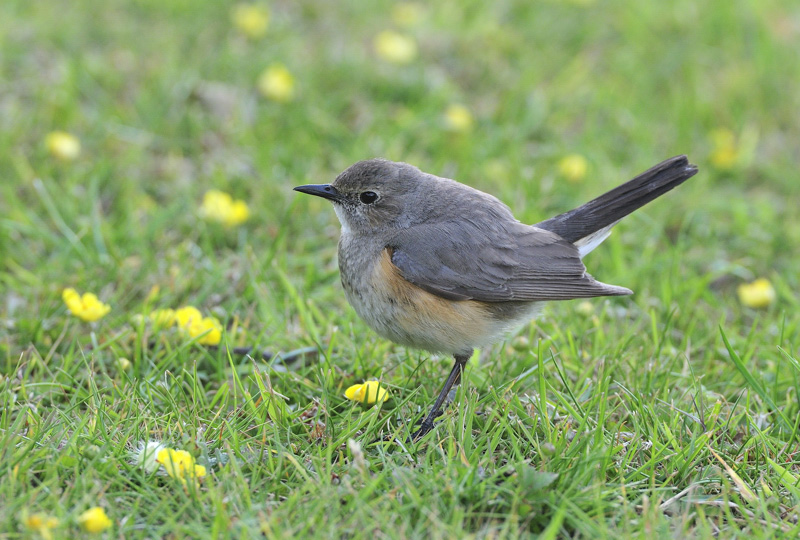
…and that’s just the big rares!!!
Who knows what’s around the corner (birdwise or weatherwise) but let’s assume that we should be looking to expect the unexpected. And if that doesn’t happen, we can look at some later spring/early summer staples to keep us on our tootsies…
# 1 - Blyth’s Reed Warbler - should be with us any day now…in to double figures for numbers recorded in the seven days ahead.
# 2 - Lesser Grey Shrike - there’ve been 16 noted in the week we’re in now, peak days being 1st and 4th (with four and five respectively).
# 3 - Little Swift - four of the nine June records have been located between June 1st-7th; this is a species that’s a nice halfway house between on the cards and wildcard, so let’s plump for this as a one-to-watch for…
…and for a parting long shot, let’s offer up… Cedar Waxwing - will lightning strike as it did last June?
Mark Golley
01 June 2016
This is my last review for quite some time as the Euros and other things kick in - so at least the grey matter will get a rest from what’s been going on here for a while. The reins will be picked up along the way as the spring rolls on towards the summer and beyond. Enjoy it all!
Please note: we put a lot of time and effort into sourcing and and producing the images, videos and graphics for each roundup. Some of you (probably Apple users) may notice some photos etc. that appear to have incorrect captions. Please try refreshing the page as they are correcty captioned. If after a refresh they are still showing the incorrect captions then please email us
Contributors websites
















